
[ Back]
[Back]
July 30 – August 10, 2025 • Dimension Zero The
29th Minimum Party creation camp
• Announcement
July 31 – August 11, 2024 • Labirynths and Mazes The
28th Minimum Party creation camp
• Announcement
July 26 – August 6, 2023 • Gaïa: The
27th Minimum Party creation camp in the shadow of
artificial intelligence
• Announcement
July 27 – August 7, 2022 • Misterium
Tremendum: The 26th Minimum Party creation
camp • Announcement
July 28 – August 8, 2021 • Productive
uncertainty: 25th Minimum Party creative camp in
the wake of the pandemic
• Announcement
November 21, 2020 • Another 9
years. Minimum Party 2011-2019. Online presentation of the
Minimum Party photo album
July 31 – August 11, 2019 • Ocean in a
drop: The 24th Minimum Party Creative Camp
• Announcement
July 25 – August 5, 2012
• Borderstanding: The
17th Minimum Party Creative Camp
• Announcement
July 30 – August 10, 2008 • Space-season: The 13th Minimum Party
Creative Camp
...
January 2, 2003 • Montanaro's New Year
concert at Tranzit House in Cluj
July 25 — August 4, 2002 • Shining
Icarus: The 7th Minimum Party Creative
Camp
May 3 — 4, 2002 • Minimum Party at the Mediawave
festival, Győr, Hungary
April 12 — 13, 2002 • Charta Minimumia
3
July 27 — August 5, 2001 • In the Shadow of the
Rising Earth: The 6th Minimum Party Creative
Camp
July 20, 2001 • Spider's
Web-aktion (Transilvaniean Student Camp,
Szejkefürdő)
March 17, 2001 • Catalogue-presentation
(Insomnia Café, Cluj)
Doors open inwards
The twenty-ninth Minimum Party creative camp and professional forum
July 30 – August 10, 2025 near the village of Kászonaltíz [Plăieșii
de Jos], at the mouth of the Tiszás creek.

This year, we decided to focus on supernatural or paranormal phenomena – within art, of course. What do we mean by 'outside the normal', 'outside the natural', what is it that we find difficult to accept as real? Or, on the other hand, do we tend to see something extraordinary where there is nothing exceptional, are we attracted to the miraculous? Do we want to do magic, do we believe in deus ex machina, or vice versa: do we look for order everywhere, even expecting to discover regular patterns where there are none, and dogmatically insist on the deterministic, explainable nature of our world? What do we know and what do we believe?1
Is order outside, or inside, in our heads?
And so many more questions... but we have a hunch that we won't be able to answer them this year either. And that isn't really a problem, because at our camp, we're used to experimenting anyway, instead of finding solutions. So let's open that door: let's make art together again this summer, at the mouth of the Tiszás creek!
1 Hegel's view of history is still dominant in our ways of thinking today, the sequence of events must necessarily be deterministic (and not random or extraordinary): "To him who looks upon the world rationally, the world in its turn presents a rational aspect. The relation is mutual. (…) If we approach the world only with subjectivity, we will find everything as we ourselves are, we will know everything better everywhere, we will see how everything should have been done, how it should have happened. But the great content of world history is rational and necessarily reasonable; divine will reigns mightily in the world, not so powerless as not to determine the great content."
Music Workshop (Emil Gherasim – Cluj-Napoca); visual workshop (Alpár Péter – Bicfalău, Transylvania); film workshop (Zoltán Balla – Viforoasa, Transylvania); photography workshop (Róbert Mosberger – Mór, Hungary); dance workshop (Andrea Kocsis and Ádám Lukács – Miskolc); architect's workshop (Sarolta Rab – Budapest); writing workshop (Kristóf Juhász – Budapest); philosophy workshop (Zsolt Pálfalusi – Budapest); craft workshop (Abigél Nagy – Târgu Mureș); Élboy experimental theater workshop (Attila Szabó – Miskolc).

Music workshop, led by Emil Gherasim (Cluj-Napoca).
Acoustic mirror.
The world of sound art is at least as abstract as the sound phenomena so often found in nature. Inexplicable yet irresistible, they draw us in. Nowadays, with a smartphone in everyone's hand, any sound phenomenon can be recorded. We will experiment with these opportunities. We will try to capture a reflection of the mysterious world of sounds around us from sound recorded on the spot. Collaboration with the film workshop is encouraged.

Visual (art) workshop, led by Alpár Péter (Bicfalău, Transylvania).
Presence
Contemporary art has the ability to transform and rewrite space, defining points of force within it, where the systems and rules of everyday existence are altered. Entering the space of such an installation, the viewer can find himself in a different mental state, a new form of consciousness. With this transformative power of art in this particular environment, we are able to create natural 'supernatural' spaces above the ordinary, which in fact expand the limits of experience into a wider spectrum of reality, opening doors to the unknown interior spaces of our consciousness.
We will be part of one of these exciting creative experiences within the framework of the visual workshop, where we will make natural art installations, either individually or in small groups, in the natural space around the clearing. The material for the installations will be primarily from natural materials discovered on site, which we will assemble by rearranging and combining them in a unique way. Following a joint field trip and a workshop launching presentation, the creative teams that emerge will prepare their sketches and designs, and then start collecting the materials and creating. The process of creating each of these works is an exciting visual experience, with many opportunities for playful performative gestures that reflect on the transience and changeability of natural space, while photo documentation of the creative process takes place. At the closing event of the workshop, these artistic photographs will be presented alongside the installations.

Film workshop, led by Zoltán Balla (Viforoasa, Transylvania).
During the camp, we will make individual experimental short films – and a longer experimental short film together – focusing on paranormal phenomena. As a starting point, we will explore the notion of paranormal phenomena together, looking into the campers' own stories, bringing their own paranormal visions to the fore. The camp will offer many things inspired by the theme: forest, stream, clearing, house, tents, camp buildings, bridge, road, car, bicycle, generator, other devices, and so on, and we will conduct individual and group field trips to explore the available things, spaces, tools, possible actors, sounds and noises that can be heard, and look for opportunities for collaboration with other workshops.
When brainstorming, we will ask questions like: What are we afraid of? (It can be a collective fear) What is your personal fear? What kind of imagery would you use to illustrate it? What is normal, what is abnormal? What do beliefs, myths, legends and nightmares, bogeymen, ghosts, demons, aliens mean to you? What about coincidences, dreams, nightmares, visions, etc.? Have you ever experienced such things? What does the unknown mean to you? What inspires you here? What is your story in the camp? How do you see your story? How, in what images, what imagery, etc.?
For those who don't have basic technical and filmmaking skills, the workshop will give you the opportunity to learn them on a basic level. At the workshop, we will help each other as much as possible!
Let this film selection serve as inspiration:
Bogdan Mirica: Câini / Dogs (2016)
David Lynch: Eraserhead (1977)
David Lynch: Twin Peaks (1990), series
David Lynch: Lost Highway (1997)
Pálfi György: Hukkle (2002)
MÉDA rb: Teknyőkaparó (1981)
Rob S. Bowen: X-files (1993–2002), sorozat
Eduardo Sánchez: The Blair Witch Project (1999)
Steven Spielberg: Close Encounters of the Third Kind (1977)
Jonathan Glazer: Under the skin (2013)
Christian Volckman: The Room (2019)
Robert Zemeckis: Contact (1997)
Lakatos Róbert: Ördögtérgye (2004)
F. W. Murnau: Nosferatu (1922)
We will go into much more detail in the first few days. Everyone is welcome!

Photography workshop, led by Róbert Mosberger (Mór, Hungary).
In photography, what is put on the picture is a matter of chance, but the relationship between light and time is determined.
Photogram, camera obscura, cyanotype. "Taking a step back", contemplation.
Photography with greater manual creative freedom, with conscious use of "mistakes". Establishing our place, our mark in nature, our relationship with nature, our relationship with our own nature.
With the emergence and relentless rapid development of artificial intelligence, we are less and less able to believe our eyes and rely more and more on our experience and intuition.
How is the meaning of photography changing, can it be objective, credible and authentic today?
Let me connect the answer with the motto of this year's camp, "Doors open inwards"!
The use of the photogram, the camera obscura, the cyanotype gives the opportunity to explore new perspectives. The accidental gestures and possible visual imperfections that arise during the process can create a special aesthetic and depth of content, can shed light on new contexts, and can encourage us to use them consciously later on, opening new doors for expressing our thoughts, feelings and insights.
We will make photos on 10x15 cm flat film, but you can also experiment with larger formats.
The camera obscuras will be mainly made from beer cans, the final image will be copied by sunlight on paper with a cyanotype solution, but other materials such as textiles, wood may also be used.

Movement theater – Dance workshop, Andrea Kocsis and Ádám Lukács (Miskolc).
The dance of forms is the very pulse of life. It is in movement that new lines, waves, whole paintings are constantly birthed. Space and time are woven together in but an instant, body and soul are intertwined, and form becomes both mind and spirit. The form-s are not mere lines in space, but feelings that become visible: the sparks of freedom in a quick spin, the depth of calmness in a slow bend.
In movement, the form simultaneously guards the key to the past, and promises the future, as if there were secret codes written the space around, that can only be understood if we pay attention. Each movement is the beginning of a brand new story — which is none other than the boundless poetry of forms.

Architect's workshop, led by Sarolta Rab (Budapest).
The geographical location, topography and climate of Szeklerland give rise to the mountainous forest land in which the local elementary stone and wood building culture emerged. It has evolved mainly through the use of local building materials, tools and technologies. In these isolated places, accessible only by forest paths or hiking, mountain huts, shelters and farm buildings are built with minimal resources, locally sourced timber and locally simple massing. The lack of infrastructure and the isolated, untouched natural environment, which expands with altitude, has contributed to the conservation of local 'low-tech' construction techniques and elementary structures. This is the dimension zero of local architecture.
In this workshop, we will experiment with the elementary structures of the region, opening a new door for them to be reshaped towards a 21st century approach. In the opening presentation, we will look at examples I have collected through a series of photographs, after which we will use analogue and digital techniques to design new structures by understanding and reinterpreting the essence of the examples. In the second half of the workshop, we will build a single jointly designed version.

Writing workshop, led by Kristóf Juhász (Budapest).
Fictitious being in the Kászons
In the name of magic and the supernatural, we’ll be observing the wildlife, noting the creatures in our surroundings and the invisible impulses that bring them to motion, with special attention to the societies formed in the flora, that work together or are at war with each other, the social world and the historical influx of ideas of mushrooms, oaks, berry bushes and ferns.
From the plants observed in real life we’ll get to those that are fictional. And we’ll do the same with the animals. From the Kászons’s herb and recipe books denoting the flora and fauna, writings related to hunting, or heraldry; church, gastronomical or military history, to the world of bestiaries.
We will gradually decode the wonders in natural phenomena, the magical from the legitimate, the inexplicable from the explicable, and we’ll form these into a dictionary entry, a report, a scientific description, or perhaps a story, a fairytale, a ballad, a poem, or maybe a witty rhyme. Further points for observation: print reading, feather collecting, or perchance the noble science of excrement analysis, with special attention to the mysterious life of the Kászon invisible bear (invisibila ursus cassones). The camp is a great place for observation, there are trees, fields, brooks, minerals, snails, bats and even acidofrequent beech, white sedge.
Those brave enough may very well stray from the observation of plants, animals, herbaries and bestiaries to that of humans. Our methods here are greater in number, since we can think of archetypes, mythology-like, or scientific, anthropological ways of thinking, perhaps even dramatic character analysis or observation with the attitude of a journalist.
The introspective job of the sometimes conscious, sometimes subconscious selection of viewpoints is always exciting! And the selection of genre, which is just as important, not to mention the interplay of the two, attracting, repulsing each other.
Naturally, with the observation of humans, comes the examination of their intellectual products. From here, this year we can move towards – taking needs into consideration – critiques and reports.
And indeed, in the name of the supernatural, we’ll be raising our gaze above even man (or at least this place): to the subhuman and superhuman beings, the world of fairies, gnomes, wraiths, forest spirits, horrors, wild maidens, shapeshifters, even angels and devils. We can discover the relation between even the hierarchies of the transcendent world and the realm of minerals, or maybe we can explore mystic connections between the twists and turns of the creeks and the limestone-laid paths.
I gladly await everyone on this adventure in the writing workshop!

Philosophy workshop, led by Zsolt Pálfalusi (Budapest).
Linked to this year’s camp slogan, in the workshop we seek the explanation for the meaning of the phenomenon related to artificial intelligence, that we call a “technological singularity”. This is based on Moore’s law, the experiential observation, in technological development, according to which the complexity of integrated circuits – considering the components with the cheapest cost – doubles around every 18 months. In the words of Ray Kurzweil:
“An analysis of the history of technology shows that technological change is exponential, contrary to the common-sense “intuitive linear” view. So we won’t experience 100 years of progress in the 21st century — it will be more like 20,000 years of progress (at today’s rate). The “returns”, such as chip speed and cost-effectiveness, also increase exponentially. There’s even exponential growth in the rate of exponential growth. Within a few decades, machine intelligence will surpass human intelligence, leading to The Singularity.”
In the workshop there will be two lectures, to introduce the subject of discussion, and seminary talks to debate said lectures, which fundamentally aren’t about the technological prerequisites of the singularity, but its effects in the philosophy of history.

Philosophy workshop, led by Abigél Nagy (Târgu Mureș, Transylvania).
Pottery in itself may already seem like magic. It’s much like a rite: we form the earth, mix it with water, dry it in the air, then fire transforms it and gives the object its final shape. Simple, yet endlessly multifaceted.
In the pottery workshop we use hand hand techniques, imprinting something of ourselves in the material. We’ll fire the works at the on location wood-burning furnace. The firing is a group activity and experience.
This year participants will have an opportunity to create unique works that will match the “mystical objects” theme, the world of paranormal events will inspire the pieces. The goal is to depict a strange, otherworldly feeling.
There might be made some strange objects, unsure in their use, magical dishes or peculiar figurines, fictional relics, masks, costumes, objects to make the place more shrine-like.
The workshop is open to all, no experience required.
We report on the twenty-eighth minimum Minimum Party creative camp
Between July 31. and August 11, 2023, at our old location, near the village of Kászonaltíz, in a forest clearing at the mouth of the Tiszás creek our twenty-eighth creative camp took place. This year the theme of the camp was the different types of uncertainty and the contrast of complexity and hopelessness. The concepts of labyrinth and maze were creatively explored in the daytime workshops and in the evening professional forum presentations. Cooperation between workshops was prevalent at this year’s Minimum Party, so the campers could try themselves in many different fields.
Music Workshop (Albert Márkos – Budapest and Miquèu Montanaro – France); visual workshop (Péter Balázs – Eger); film workshop (Balázs T. Vörös – Sfântu Gheorghe); photography workshop (Zsolt Fekete – Târgu Mureș); dance workshop (Ildikó Ágnes Szabó – Budapest); architect's workshop (Sarolta Rab – Budapest); writing workshop (Orsolya Láng – Budapest–Târgu Mureș); philosophy workshop (Zsolt Pálfalusi – Budapest); craft workshop (Abigél Nagy – Târgu Mureș); Élboy experimental theater workshop (Attila Szabó – Miskolc).

July 31, wednesday
Day of arrival.
Setting camp, getting to know each other, free program
22.00 – Film screening: 9 years of Minimum Party in 9 chapters
Afterwards: campfire, getting to know each other.
August 1, thursday
8.00–9.00 – Breakfast
9.00–11.00 – Discovering the place, acclimatization, free program
11.00 – Introduction of the workshop leaders
14.00–15.00 – Lunch
16.00 – Photography workshop
17.00 – Visual (fine art) workshop
18.00 – Words&Music (music workshop, led by Albert Márkos)
19.30 – Introduction of the architect’s and film workshops
20.00 – Dinner
21.00 – Words&Music – performance
21.30 – Élboy: The original text
22.00 – Sarolta Rab: Architectural works
Afterwards: campfire, discussion.

August 2, friday
7.30 – Morning excercises with Ági Szabó
8.00–9.00 – Breakfast
10.00 – Words&Music
12.00 – Butoh (movement theater) workshop
14.00–15.00 – Brainstorming in the architect’s workshop
15.00–16.00 – Lunch
16.00 – Craft (pottery) workshop
18.00 – Writing workshop
20.00 – Dinner
21.00 – Words&Music: Domi I. (using István Domonkos Domi: Yu-Hu-Rap)
21.30 – Élboy: Triptichon (I. az Élboy esztétikája, II. Talpra japán , III. Ki nyer ma?)
Afterwards: campfire, conversation.
August 3, saturday
7.30 – Morning exercises
8.00–9.00 – Breakfast
Craft (pottery) workshop - all day
Film workshop
10.00 – Words&Music
11.00 – Photography workshop
12.00 – Movement theater workshop
13.00 – Architect’s workshop
14.30–16.00 – Lunch
16.00 – Words&Music
17.00 – Writing workshop
19.00 – Kinga Boros: Lost women in the contemporary hungarian theater - presentation at the profesional forum
20.30 – Dinner
21.30 – Words&Music: Domi II.
22.00 – Élboy & Orchestra: „NEMKEL FOGLAL Kozni Másal...”
Afterwards: campfire, party.

August 4, sunday
7.30 – Morning exercises
8.00–9.00 – Breakfast
Ceramics workshop - all day
12.00 – Andrei Tarkovsky: Stalker (screening in the film workshop)
12.00 – Movement theater workshop
13.00 – Architect’s workshop
14.30–16.00 – Lunch
16.00–20.00 – Writing workshop
18.00 – Zsolt Pálfalusi: Introduction to the philosophy workshop
20.00 – Dinner
21.00 – Emőke Kerekes: Mediums and scenery
Afterwards: campfire, discussion.

August 5, monday
7.30 – Morning exercises
8.00–9.00 – Breakfast
Craft workshop - all day
12.00 – Movement theater workshop
13.00 – Architect’s workshop
14.30–16.00 – Lunch
16.00 – Words&Music
18.00 – Writing workshop
19.00 – Philosophy workshop
20.30 – Dinner
21.15 – Words&Music: Domi III.
22.00 – Kis-Tóth Zalán: Short film screenings
Afterwards: campfire, discussion.

August 6, tuesday
8.00–9.00 – Breakfast
Craft workshop - all day
10.00 – Words&Music
11.30 – Photography workshop
12.00 – Movement theater workshop
13.00 – Architect’s workshop
14.30–15.00 – Lunch
16.00 – Film sheet music (Music workshop, led by Miquèu Montanaro)
18.00 – Writing workshop
19.00 – Philosophy workshop
20.30 – Dinner
21.15 – Words&Music: Domi IV.
21.30 – Mar / The sea - Miquèu Montanaro's extended solo
23.00 – Eszter Szőllősi: Short film screening
Afterwards: campfire, discussion.

August 7, wednesday
8.00–9.00 – Breakfast
Craft workshop - all day
Film workshop - all day
10.00 – Words&Music
12.00 – Movement theater workshop
13.00 – Architect’s workshop
13.45 – A herceghalmi maffia / The mafia of Herceghalom - water performance
14.30–15.30 – Lunch
16.00 – Film sheet music
18.00 – Writing workshop
19.00 – Philosophy workshop
20.30 – Dinner
21.15 – Words&Music performance
21.30 – Film sheet music – performance
22.00 – Béla Losonczi: Album showcasing (with the help of Endre Dix Bölöni)
Afterwards: campfire, party.

August 8, thursday
8.00 – Morning exercises
9.00 – Breakfast
10.00 – Words&Music
Craft workshop - all day
12.00 – Movement theater workshop
13.00 – Architect’s workshop
14.30–15.30 – Lunch
16.00 – Film sheet music
18.00 – Writing workshop
19.00 – Philosophy workshop
20.30 – Dinner
21.15 – Film sheet music – performance
21.30 – Words&Music – performance
21.45 – Elemér Benedek - Albert Márkos: Short films (Székely vicc / Szekler joke - Mány, Székely vicc / Szekler joke - Kászon)
22.00 – Béla Mester: The labyrinths of the Transylvanian way of thinking - presentation at the profesional forum
Afterwards: campfire, discussion.

August 9, friday
7.30 – Morning exercises
8.00–9.00 – Breakfast
10.00 – Words&Music
Craft workshop - all day
12.00 – Movement theater workshop
12.45 – Julianna Kádár: Farkasszem / Staring contest - Short film screening
13.00 – Architect’s workshop
14.30–15.30 – Lunch
16.00 – Film sheet music
18.00 – Writing workshop
18.30 – Zsolt Fekete: Performance
19.00 – Philosophy workshop
20.00 – Beszólószék / Insult pulpit - children’s performance
20.30 – Dinner
21.15 – Élboy
21.30 – Words&Music performance
21.45 – Film sheet music – performance
22.30 – Tibor Zátonyi's photography screening: Részletek az Idézetek egy városról és a Jegyzetek egy helyről c. sorozatokból / Extracts from the series Quotes from a city and Notes of a place
Afterwards: campfire, conversation.

August 10, saturday
7.30 – Morning exercises
8.00–9.00 – Breakfast
10.00 – Words&Music
14.00 – Útközben / Along the way - the movement theater’s performance
9.00 – 14.00 – Workshop activities
14.30–15.00 – Lunch
16.00 – Térháló / Mesh - Presentation of the architect’s and craft workshop, with the collaboration of Miquèu Montanaro’s music workshop
16.45 – Tükörcsapda / Mirror trap - installation of the architect’s workshop
17.00 – Film sheet music
18.00 – Writing workshop
19.30 – Dinner
20.00 – Film sheet music – performance
20.15 – Labirintus játék / Labyrinth game - presentation of the craft workshop
20.45 – Presentation of the visual workshop
21.00 – Philosophia arbitrar
23.00 – Presentation of the film workshop
23.15 – Presentation of the photography workshop
24.00 – Words&Music: felvezető a bulihoz / leading up to the party… (feat. Vince Schneider)
Afterwards: End-of-camp party.
August 11, sunday
Breaking up camp, going home.
Types of uncertainty: the complexity of initiation and
interpretation versus the meaninglessness of chaos
The twenty-eighth Minimum Party creative camp and professional
forum
July 31 – August 11, 2023 near the village of
Kászonaltíz [Plăieșii de Jos], at the mouth of the Tiszás creek.

This year, the theme of the 28th Minimum Party will be the difference between complexity and hopelessness, with the title Labyrinths and Mazes.
Which came first, the labyrinth or the maze? This dilemma is something like the chicken and the egg question, as both concepts involve the other. However, it seems that in the labyrinth-maze competition, the labyrinth takes precedence, and may have been the original symbol. In a few words: the maze has only one entrance and one centre, and between the two there is only one path, although it is very complicated, but with no forks, so you cannot get lost, unlike the maze, which is designed to do exactly that. Originally, the labyrinth was a place of initiation and had a positive charge. Perhaps in its oldest version, the ancestor, or possibly the creator, was at the centre. The pilgrimage to it was a process of enlightenment. In the meantime, the notion of the maze, and the image of the monster, deceiver or villain lurking in the middle of the maze, may have appeared as a further development of the secondary meaning and the opacity inherent in the complexity. In short: we have sought enlightenment, explanations of the world and ourselves, but in the process we have managed to lose our way, and without outside help (Ariadne's thread) we can no longer find our way out of the maze of horrors. And it seems that we have missed the opportunity to find the truth. Or has this process already taken place many times, alternating between meaningful and meaningless eras of humanity? Could it be that in the middle of every labyrinth of rounded, harmonious explanations of the world, we find nothing but a hopeless maze? And once we have wound our way through that, do we arrive again at a sacred labyrinth? At the Minimum Party 2024, we will look for the artistic tools that turn the labyrinth into a maze and the maze into a labyrinth.
Good experimentation everyone!
Music Workshop (Albert Márkos – Budapest and Miquèu Montanaro – France); visual workshop (Péter Balázs – Eger); film workshop (Balázs T. Vörös – Sfântu Gheorghe); photography workshop (Zsolt Fekete – Târgu Mureș); dance workshop (Ildikó Ágnes Szabó – Budapest); architect's workshop (Sarolta Rab – Budapest); writing workshop (Orsolya Láng – Budapest–Târgu Mureș); philosophy workshop (Zsolt Pálfalusi – Budapest); craft workshop (Abigél Nagy – Târgu Mureș); Élboy experimental theater workshop (Attila Szabó – Miskolc).

Music workshop,led by Albert Márkos (Budapest) and Miquèu Montanaro (France).
At this year's Minimum Party, you can attend Albert Márkos's workshop in the morning and Montanaro's workshop in the afternoon, and you can meet their different approaches.
In the morning with Albert Márkos: ...
In the afternoon with Miquèu Montanaro: ...

Visual (art) workshop, led by Péter Balázs (Eger-Noszvaj, "Farkaskő" Cave Art Colony from Noszvaj).
"To build is to make place in space and space in place." (Hamvas, 2002)
Labyrinth or maze?
It is up to us how we perceive the world around us. Do we get lost and wander, or do we try to explore our surroundings with eyes wide open - to the place - to make the space personal.
Among the old expressions of the Hungarian language we find the words "csalkert", "tömkeleg", "tévkert", but several nouns with a similar structure and a prefix "csal" have disappeared from use, such as "csalnyom", "csalszem", "csalszó", "csaltoll", "csalszín", "csaltojás", "csalút", etc. ... all of which referred to terms of deception: labyrinth - maze, and slowly faded from everyday use.
Let's follow the playful path of deception in this year's camp as we create art. Let's seek our place in the natural environment, using natural materials. Let's invent together a work on a larger scale, and in the spirit of the "grand gesture", let's think, create, but also work on making "small gesture" scale works of inner-intimate journeys.
It's good to pack hand tools in your backpack. I look forward to seeing you!

Film workshop, led by Balázs T. Vörös (Sfântu Gheorghe).
Labyrinth or maze?
Space and time in
cinema
"Let it come true what has been planned. Let they believe. And
let they laugh at their passions; for what they call a passion
is only a friction between the soul and the outer world. And
above all, let they believe in themselves and become helpless as
children, because weakness is great and strength is
worthless. When a man is born, he is weak and supple, when he
dies – he is strong and callous. When a tree grows, it is tender
and gentle, and when it is dry and hard, it dies. Hardness and
strength are companions of the death, suppleness and weakness
express the freshness of living. That is why what has hardened,
will not win.
– Come here! We’re going quite well. The
“dry tunnel” will be soon, there it will be easier.
–
Take care not to put an evil eye.
– What, are we leaving
right now?
– Of course, why?
– Wait! I thought
that you... that you only want to show something for us! What
about my rucksack?
– And what happened to the
rucksack?
– What “what happened”? I left it there! I
didn’t know that we are already going on!
– Now you
cannot do anything.
– No way. We must return.
–
It’s impossible!
– But I cannot continue without the
rucksack!
– Here one does not come back! Remember, nobody
ever returned the same way here!
– Spit upon that
rucksack. What do you have in it – diamonds?
– You forgot
where you are going. The room will give you anything you
wish.
– Indeed. You’ll get loaded with rucksacks.
– And how far is it to that very Room?
– Straight – about
two hundred meters. In a straight line, but straight lines do
not exist here, that’s the problem... Let’s go.
– Leave
that crawling empiricism of yours, Professor. The miracle is not
in the empirics."
(Andrei Tarkovsky: Stalker, 1979)
We continue to experiment: Once you have imagined your
fictional space, you can place your story in it. From the
synopsis, to the scriptwriting, all the way to the execution, we
work as a team. The same rule applies: if possible, carry your
concept and point of view through the entire process of
creation.
We will connect with the other workshops of the Minimum Party
through film projections, analytical discussions and
collaborative work.
If you can, bring any filming device from mobile phone to
digital camera, and a laptop for editing.

Photo workshop, led by Zsolt Fekete (Târgu Mureş).
"Interesting encounters, coincidences and accidents accompany
us throughout our lives, we could map out our future by
stretching out the experiences we have already had, this is the
paradox of life's journey: we have infinite possibilities, but
our choices always reduce them until we can only go down one
path.
Either way, you will go along your path, which may seem
predetermined, but which you ultimately control yourself" (in:
Zsolt Fekete: Az idő fényképe [The Photograph of Time])
Life is a maze, but for those who believe, life is a labyrinth,
the path to their soul.
The Minimum Party in the Kászon region is a small life, a small
labyrinth. This year, let's find our "path of life" in it.
Bring postcard size photos of yourselves or landscapes, even
those taken at a Minimum Party, we will reproduce them or insert
them in the landscape. Let's see if it is possible to repeat? Or
does each gesture (photograph) start a new journey, a new life?
There will also be flower photography. About 20 years ago I
came across the passion flower (Passiflora) being used as a
sedative. I have just bought two plants, one here on my terrace,
the other in Ikland in the garden, interesting 20 year
journey.
Analogue black and white photography, film development. I would
like to be able to take good photographs, as a photograph is a
labyrinth, in which the eye walks among the visual elements.

Dance workshop, led by Ildikó Ágnes Szabó (Budapest).
The labyrinth of butoh: the maze of words
In this year's workshop, we experiment in the labyrinth of
butoh!
The "inner landscapes" that form the basis of movement or even
stillness in butoh create the framework for the dancer's free
improvisation, the outline of the choreography, but they come to
life and are completed during the dance. Their primary purpose
is to inspire the dancer, but also to enable him or her to dance
the choreography later.
In the course of the dance, the dancer experiences these images
of butoh-fu, or 'inner landscapes', as primary realities,
discovering, mapping and defining the processes of events and
happenings.
The subjective, volatile and changeable nature of mental images
expressed in the here-and-now, in the present-existence, in the
verbal and non-verbal symbolic language of butoh-fu, is very
recognisable.

Architect's workshop, led by Sarolta Rab (Budapest).
What routes can we draw? Where would we start and where would
we arrive? How do you turn a line drawing into a labyrinth? Why
is it a circle, why is it a square, or can it have a different
formula? What are the spatial rules of a labyrinth? And is there
a real labyrinth without a maze? For example, is there a
straight labyrinth? How do you construct it, what is the
internal logic that makes it immediately recognisable? Is it a
connected system network or a diffuse abstract pattern? What are
the limits of recognisability? What are the walls along the
lines made of? What does it mean to walk alongside walls,
between walls or inside walls?
From Greek mythology and Roman mosaic floors to the labyrinths
built into castle walls, the labyrinth is an eternal
architectural topos, which we will explore in the architect's
workshop in its many uses and interpretations, as well as its
physical implementation. But what is a labyrinth like today? How
can we draw and create the spatial relationships typical of a
labyrinth in a different way, using building elements found on
the spot? What can we even build out of? What spatial
situations from nature can we use to push the boundaries of the
formula? We welcome anyone who would like to reflect on this
topic and is not afraid to saw, drill, build...
Until then, I recommend Paolo Santarcangeli: Il libro dei
Labirinti (The Book of Labyrinths).

Writing workshop, led by Orsolya Láng (Budapest–Târgu Mureș).
A labyrinth can be a maze, but it can also be a way out. But a thorough familiarity with the route is inevitable. From the starting line, the destination is not visible, each bend provides a new perspective, a different point of view. In this year's literature workshop, we will create rhymes, riddles, puzzles, picture poems, anagrams, the idea is to mislead the Reader. Then we give them the key to the solution. Or not. Attention! The texts can be read backwards and still make sense. Because the text is not a one-way road.

Philosophy workshop, led by Zsolt Pálfalusi (Budapest).
In Greek mythology, the labyrinth was an elaborate structure designed by Daedalus and built for Knossos' king, Minos, to hold the Minotaur, a half-man, half-bull creature. The labyrinth became a symbol of complex systems that were difficult to understand. In many cultures, the labyrinth has served as a spiritual guide. Medieval Christian labyrinths, for example, served as meditation tools and substitutes for pilgrimages. Walking in such labyrinths symbolised a spiritual journey and an encounter with the divine. In philosophical and literary contexts, the labyrinth is often an allegory of human life, the search for knowledge, difficult and complex decision situations, or identity and self-discovery. In this year's philosophy workshop, we will address the problem of how the negative and positive aspects of the labyrinth are woven into the symbols and phenomena of our times.

Craft workshop, Abigél Nagy (Târgu Mureş)
A maze and a labyrinth are often confused on the outside, but they are very different in their essence. While one symbolises the loss of people, the other is a path to enlightenment. Often, in our own lives, we may not realise which one we are walking through, which one we are heading towards. In the ceramics workshop, you will have the opportunity to create small sculptures that carry the spirit of either the labyrinth or the maze. These works will be presented as one large installation at the end of the camp. Clay will be the raw material for the artwork, which can be coloured with engobes and glazes to further express the character and atmosphere of the given journey.

Élboy – experimental theater workshop, led by Attila Szabó (Miskolc)
[...] At the Minimum Party 2024, we will look for the artistic tools that turn the labyrinth into a maze and the maze into a labyrinth.* (Excerpt from the announcement.)
____________________
* In this camp, Élboy presents itself in the form of a modest
footnote as being inexperienced** in the art
of turning a labyrinth into a maze, or a maze into a
labyrinth.
** Footnote of footnote: Élboy has not been able to carve a
self-contained tunnel in the body of the camp in its 25 years of
activity, Élboy is not a hatch*** into the
depths of the camp, but is stuck on the surface…
*** Footnote of footnote of footnote: In the absence of a
constructive vision, it only mocks others who take the creative
work of the camp seriously and see the community of campers as
an audience****.
**** Footnote of footnote of footnote of footnote: He italicized
audience because he wanted to visualize how everyone in the
camp falls for him and believes that serious
intellectual work is going on under the guise of
superficial humour†.
† By humour, the writer of the above text may mean wordplay,
like the puns that have lost their meaning in the English
translation of this introduction, sadly.

Tibor Schneider, Csenge Schneider-Lőnhárt, Bence Schneider, Vince Schneider (Cluj), Ildikó Lőrincz (Odorheiu Secuiesc)
Department of Inter-Ethnic Relations of the Romanian Government
(DRI),
National Cultural Fund Program (Budapest),
Hungarian Democratic Association of Romania and the Communitas
Foundation (Cluj).
Mayor's Office of Plăieșii de Jos
Kazun Cultural Association,
Dr. Lukács Mihály Primary School (Plăieșii de Jos),
János Tuzson Primary School (Cașinu Nou).
The Hungarian-language broadcast of Romanian Television
We report on the twenty-seventh Minimum Party creative camp
2023. between July 26 and August 6, at our old location, in the village of Kászonaltíz, in a forest clearing at the mouth of the Tiszás stream our twenty-seventh creative camp took place. This year the theme of the camp was G.AÏ.a - The Contrast and Fusion of Artificial and Natural, and by highlighting the AI in the name of the Goddess of the Earth, the contrast and fusion of artificial and natural was creatively explored in the daytime workshops and in the evening professional forum presentations.
Music workshop (Márkos Albert - Budapest and Miquèu Montanaro - France); visual workshop (Péter Balázs – Eger); film workshop (T. Balázs Vörös - György Sepsiszent); photo workshop (Vivien Miron-Vilidár – Budapest-Nagyvárad); movement theater-dance workshop (Andrea Kocsis and Ádám Lukács – Miskolc); architect's workshop (Rab Sarolta – Budapest); writing workshop (Orsolya Láng – Budapest–Marosvásárhely); philosophy workshop (Zsolt Pálfalusi – Budapest); craft workshop (Demeter Krisztina – Gödöllő, Hungary); Élboy experimental theater workshop (Attila Szabó - Miskolc).
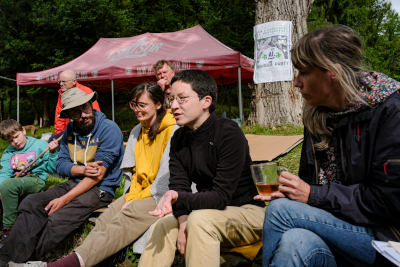
July 26, Wednesday
Arrival date.
Camping, getting to know each other, free program.
Evening: campfire, getting to know each other.
July 27, Thursday
8.00-9.00 - Breakfast
9.00–14.00 – Discovery of the place, acclimatization
14.00 – Lunch
16.00 - Introduction of the workshop leaders
17.00–20.00 – Making a darkroom: building stairs
20.00 – Dinner
21.00 – Words&Music – performance by Orsolya Láng and Albert Márkos
21.15 - Montanaro's solo performance
22.00 – Presentation of visual artist Péter Balázs
Afterwards: campfire, discussion.
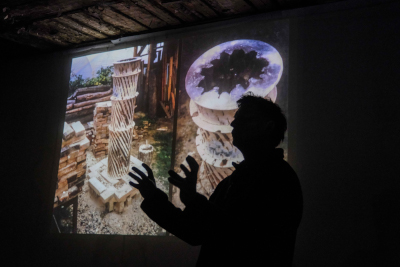
Friday, July 28
8.00-9.00 - Breakfast
9.00 - 14.00 - Workshop activities
14.00–15.00 – Lunch
16.00–20.00 – Workshop activities
20.00 - Zsolt Pálfalusi's topic guide
20.30 – Dinner
21.00 - Words&Music - musical performance led by Albert Márkos
21.30 - Film&Music - musical performance led by Montanaro
22.00 - Zoltán Huszárik - János Tóth: Elegy (film screening, introduction to the film workshop led by Balázs Vörös T.)
Afterwards: campfire, conversation.
Saturday, July 29
8.00-9.00 - Breakfast
9.00 - 14.00 - Workshop activities
14.00–15.00 – Lunch
16.00–20.00 – Workshop activities
20.00 – Dinner
21.00 - Film&Music: Dracula scene 1.
21.30 - Words and Music - Disztichon Alfa, Tibor Papp's poem generator
22.00 - Péter Balázs: The change in the view of nature - presentation
23.00 – campfire, party
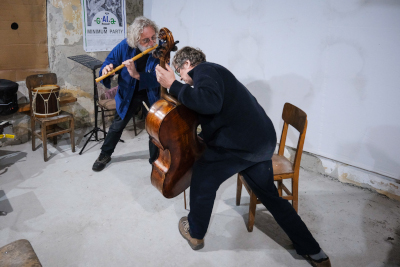
July 30, Sunday
8.00-9.00 - Breakfast
9.00 - 14.00 - Workshop activities
14.00–15.00 – Lunch
16.00–20.00 – Workshop activities
20.00 – Dinner
21.00 - Film&Music: Dracula scene 2.
21.30 - Words&Music
22.00 – Presentation by artist Imre Berze
Afterwards: Campfire, discussions.
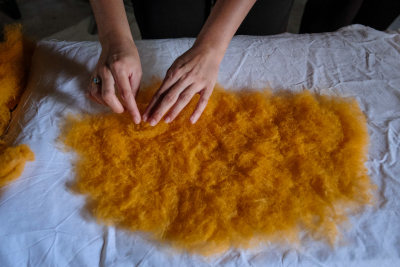
Monday, July 31
8.00-9.00 - Breakfast
9.00 - 14.00 - Workshop activities
14.00–15.00 – Lunch
16.00–18.30 – Workshop activities
18.30 - András Ignác - Tamás Lakatos: Bullfight in Nagykászon - a local history and ethnographic presentation combined with a screening
20.00 – Dinner
20.30 - Attila Szabó/Élboy: "Ceci n'est pas une pipe" (Autumn was in Paris) - experimental theater performance
21.00 - Words&Music
21.30 – Film&Music
22.00 – Presentation of architects Sarolta Rab and Dóra Szuszik
Afterwards: Campfire, discussion.
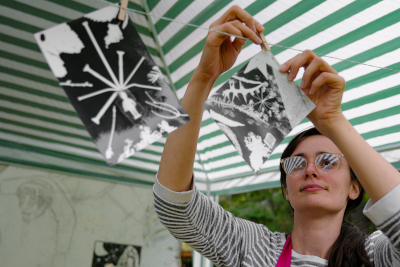
August 1, Tuesday
8.00-9.00 - Breakfast
9.00 - 14.00 - Workshop activities
14.00–15.00 – Lunch
16.00–18.30 – Workshop activities
18.30 - Presentation of the tenth Minimum Party publication
19.30 – Dinner
20.30 - Attila Szabó/Élboy: Leporello at the Gare de l'Est - experimental theater performance
21.00 - Words&Music
21.30 – Film&Music
22.00 - Presentation by Vivien Miron Vilidár (photographer)
Afterwards: Campfire, discussion.
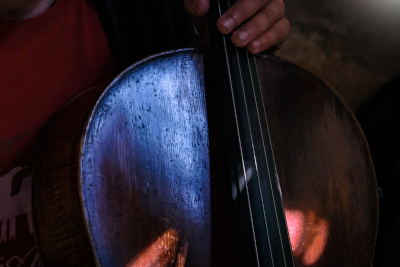
August 2, Wednesday
8.00-9.00 - Breakfast
9.00 - 14.00 - Workshop activities
14.00–15.00 – Lunch
16.00–19.00 – Workshop activities
19.00 – Mester Béla: Über vég – lecture and discussion about the development of writing the history of philosophy, the work of Frigyes Überweg
20.00 – Dinner
20.30 – Attila Szabó/Élboy: The aesthetics of Élboy 1. – experimental theater performance
21.00 - Words&Music
21.30 - Film&Music - filmless journey in South America
22.00 – Presentation of textile artist Krisztina Demeter
11.30 p.m. - Kászoni vadlegényes - a guide to the party on Wednesday.

August 3, Thursday
8.00-9.00 - Breakfast
9.00 - 14.00 - Workshop activities
14.00–15.00 – Lunch
16.00–18.00 – Workshop activities
18.00 - Movement&Music - production of the movement theater and the music workshop
19.30 – Dinner
21.00 - Words&Music&Élboy - My mother's hen
20.30 - Zsolt Pálfalusi: Monologue of a wild animal - poetry presentation at the professional forum
22.00 - Jakab Ervin: Along the Kis- and Nagy-Küküllő - film presentation
Afterwards: Campfire, discussion.
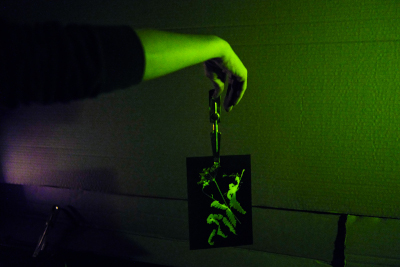
Friday, August 4
8.00-9.00 - Breakfast
9.00 - 14.00 - Workshop activities
14.00–15.00 – Lunch
16.00–18.30 – Workshop activities
18.30 - Sun clock - presentation of the architectural workshop's monumental installation
19.30 – Dinner
20.10 - Dust devil - presentation of the fine arts workshop, the music and movement workshop contributed
21.30 – Attila Szabó/Élboy: Aesthetics of Élboy 2. – experimental theater performance
22.00 - Words&Music
22.15 – Film&Music
22.30 – Presentation of photographer Zsolt Fekete at the professional forum: 3-MOME.Napló
Afterwards: Campfire, discussion.

August 5, Saturday
8.00-9.00 - Breakfast
9.00 - 14.00 - Workshop activities
14.00–15.00 – Lunch
16.00 – Presentation of the works of the craft workshop, contributed by Zsolt Molnár (installation), the writing workshop (texts), Márton Haáz (flute)
17.30 - Presentation of the photo workshop, Duncan Watson, Endre Bölöni - Dix and Huba Csapó (shaman drum) took part in the exhibition opening
18.00 - Mihat Konrad: Tale of the Believers - panoramic film
19.00 – Presentation of the music workshop, including texts from the writing workshop and Bence Schneider's Text Generator
20.00 – Dinner
20.40 - Zsolt Pálfalusi: The specificity of aesthetics - presentation at the professional forum
22.00 - About each other - picture and text compilation, prepared by Veronika Molnár, Ágnes Molnár, Katinka Szabó and Tamás Márkos
22.25 – Tamás Márkos: Camp life pictures – screening of the camp documentation, accompanied by music
22.30 – Presentation of the film workshop
22.30 - Dotti Szemigán - Bence Schneider: Kéregállomány (Celebral Cortex) - video installation
Afterwards: End-of-camp party.
August 6, Sunday
Breaking of camp, going home.
The contrast and fusion of natural and
artificial
The twenty-seventh Minimum Party creative camp and professional
forum
July 26 – August 6, 2023 near the village of Kászonaltíz [Plăieșii de Jos], at
the mouth of the Tiszás creek.
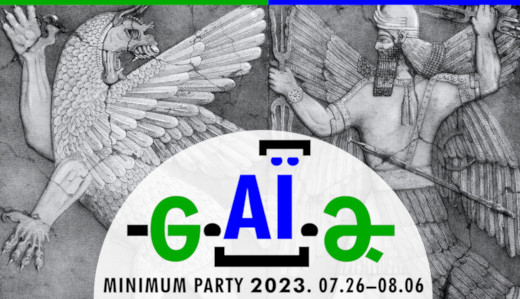
The theme of the 27th Minimum Party creative camp this year will be the opposition between natural and artificial, entitled Gaia.
Incredibly fast supercomputers are currently being developed in such a way that they can perform intelligent tasks typical of human activity. This is AI, artificial intelligence. Among other things, one of the digital giants has set the goal of using artificial intelligence to create works of art, composing not only images, but also videos and music. According to the initiators, an artificial intelligence is needed that "does not think like us and provides answers that we are not capable of." They claim to be exploring creativity with the help of artificial intelligence and believe that the program they use will become a new tool for art in the future.
In parallel with the events, several artists expressed their reservations regarding the fact that the machines would really be able to create real works of art. The cyberspace has given rise to new types of communities and unprecedented collective arts. A new type of digital world language has emerged, the creative process has become democratized, and works in progress have come to dominate the scene. Important epistemological, moral, and existential problems have also arisen.
The most fascinating aspect of automation is that machines can perform algorithmizable tasks better than humans. "When reason is competent in everything, that's bankruptcy. We are heading towards an over-rationalized, and therefore irrational, period... And that is terrible." as Vilém Flusser stated over 30 years ago.
The representations created by artificial intelligence say nothing about the artistic intentions behind them. In order to avoid lack of originality and depth, the intentions of the programmer should be overwritten by the intention of the creator. Only then can we consider a work as original and important, assuming a conscious author who creates it based on their knowledge of their time.
Style is the hallmark of an artist's uniqueness, an original way of representing intentional systems, the core of personality and the guarantee of authenticity. In contrast, manners act according to rules. Artificially created works merely imitate style. These artifacts lack artistic consciousness. Art experts know that a copy has no style, only manners. Style is an innate talent, not the result of expertise and competence; manners can be learned. Arthur Danto claimed that "if we understand the difference between style and manner, we learn something very important about our existence." This contrasts expertise with talent. The latter is creative, refined, and unexpected, while the former is pre-programmed. Talent cannot be produced, only nurtured. According to Danto, style can be identified with the unexpected and unpredictable way of representation, while manner only simulates this.
But what does all this have to do with the Minimum Party, a creative camp that has always deliberately withdrawn from civilization in search of nature and the natural? We ourselves live in our changing world and carry the influence of AI with us to the mountains. So we don't pretend that technology ceases to exist in the forest clearing. However, this time, we will not focus so much on its use, but rather try to use it as an inspiration to examine the contrast between artificial and natural, or the fusion of the two. Hence, the title of the camp: In front of us, Mother Earth, Gaia, where the artificial being appears but is actually modeled after her. Wishing everyone good experimentation!
Music Workshop (Albert Márkos – Budapest and Miquèu Montanaro – France); visual workshop (Péter Balázs – Eger); film workshop (Balázs T. Vörös – Sfântu Gheorghe); photography workshop (Vivien Miron-Vilidár – Budapest-Oradea); dance workshop (Andrea Kocsis and Ádám Lukács – Miskolc); architectural workshop (Sarolta Rab – Budapest); writing workshop (Orsolya Láng – Budapest–Târgu Mureș); philosophy workshop (Zsolt Pálfalusi – Budapest); craft workshop (Krisztina Demeter – Gödöllő, Hungary); Élboy experimental theater workshop (Attila Szabó – Miskolc).

Music workshop,led by Albert Márkos (Budapest) and Miquèu Montanaro (France).
At this year's Minimum Party, you can attend Albert Márkos's workshop in the morning and Montanaro's workshop in the afternoon, and you can meet their different approaches.
Every morning with Albert Márkos:
We invite our interested parties to a workshop in which words and
music enliven each other.
The participants of the workshop prepare to perform
improvisations and compositions created together in the workshop
every evening.
In collaboration with musicians, poets, writers and actors do
the same.
They improvise in their own way; they say their lyrics not in a
pre-determined order, but in response to the flow of the music,
to which the musicians have to react again. In this way, the
dramaturgy of the performance is shaped by the back and forth
effect. They are able to form many different and complicated
relations in this way.
Words and music unite, fight, befriend, oppose, join forces and
then compete, just as in Samuel Beckett's radio play Words and
Music, just like in Samuel Beckett's radio play Words and
Music, where it all happens for the entertainment of the
audience.
Sometimes they speak separately, sometimes together, but always
building on each other. Sometimes one leads, sometimes the
other, sometimes they blend together, sometimes they
counterpoint, sometimes one dominates, sometimes the
other.
In any case, by the end of the productions, we will definitely have
the impression that the genres were in parity, not in a
relationship ordered below, above, and next to each other.
The Words & Music workshop is inspired by the event
series of the Nyitott Műhely Szöveg és Zene (Open Workshop,
Text and Music) in Budapest, organized by Albert Márkos and
László Finta.
What does this mean in practice?
- we analyze texts, but not only their content/meaning, but also
their musicality: rhythmicity, melodic arc.
- we set texts to music, write songs with or without stylistic
and idiomatic constraints, and perform them.
- we edit, rehearse and perform absurd or narrative musical
scenes.
- we perform guided improvisation exercises with or without
text, and we perform the results that we consider
stage-worthy.
- and finally we get to the point of improvising freely with or
without text.
In the first days - until we receive texts from the writing
workshop - we write texts with Tibor
Papp's DISZTICHON ALFA, the first Hungarian
automatic poetry generator from 1993.
In the afternoon with Miquèu Montanaro:
Making music for pictures.
Making music for a moving picture.
Composing music for a silent feature film.
Many people explain in many ways how it should be done, what is
the recipe for it, what should and should not be done, but this
year at the Minimum Party we will not focus on that.
We will try to make music for different images together,
improvise, mix different sounds, and fuse different
styles.
We will primarily work with the new silent film, Dracula. It
will be possible to continue this at other festivals after the
camp, in 2024.
Instead of Artificial Intelligence, we will explore
natural emotion, creating together in the middle of the
forest.
So:
Improvising
Improvising with themes
Improvising with given situation.

Art exploring nature – Visual (art) workshop, led by Péter Balázs (Eger-Noszvaj, "Farkaskő" Cave Art Colony from Noszvaj).
In front of us, Mother Earth, Gaia, where the artificial being
appears but is actually modeled after her. For me, rural life
and art is an opportunity and an obligation to express
ecological thinking in its own environment. I think that the
most important thing is to discover the energies and patterns of
a place, to show them and to use their characteristics with a
natural art approach.
"Each genuine representation is a new relationship to the
world, in which one places oneself, and is by no means just a
passive copy of the world." (Ernst Cassirer:
Mythic, Aesthetic, and Theoretical Space) The
possibility of experiencing and identifying with the landscape
means a new kind of spatial experience. The effects of different
forms of spatial perception, culturally defined spatial
attitudes, and spatial theories definitely result an almost
unique vision of space in an individual. This characteristic can
be tuned and extended in different ways.
The time and place are given, the choice of tools is wide, the
inspiration is personal. I invite everyone to search for
individual paths, to think together, to create; in plane
(visual), space (plastic) or time (performative). Bring your
indispensable tools with you.

Film workshop, led by Balázs T. Vörös (Sfântu Gheorghe).
Experimental techniques in cinematography
Keyword: counterpoint
Step out of your comfort zone and experiment!
Portraying natural and artificial, documentary and fictional
processes and stories, phenomenons and objects, artworks and
landscapes, people and characters, using experimental tools.
You can film through a pinhole camera, build your own optics. You
can see how an imagery process is transformed through a drop of
water, a natural and an artificial reflection, or even through the
projection of a shadow. Once you have chosen your own "optics",
you can use it to create animation, short films, documentaries or
even video art, but preferably take your concept and your "optics"
through the whole process of creation.
We will connect with the other workshops of the Minimum Party with
film projections, analytical discussions and collaborative
creation.
If you can, bring any filming device from mobile phone to digital
camera, and a laptop for editing.

Photo workshop, led by Vivien Miron-Vilidár (Budapest–Oradea).
Two ends of the spectrum: light and shadow
Would you like to know more about the use of light, one of the
most important parts of photography?
Are you interested in old photographic techniques?
Do you want to take a picture without a camera or phone?
Or are you more drawn to digital photography?
Would you like to dive into making a series of photos, from the
planning, through the execution, to putting together the sequence
- to the exhibition?
At the Minimum Party's photo workshop you can take an insight into
off-camera image-making techniques such as photograms and
cyanotypes.
The theme and keyword of the workshop is 'opposites', which we
will discuss together and create based on the theme. The practical
art of the workshop will be guided and free photography: with a
focus on lighting, subject, framing. Participants of the workshop
will create a photo session, which can be staged, documentary or a
combination of both - everyone is free to choose.

Dance workshop, led by Andrea Kocsis and Ádám Lukács (Miskolc).
What does artificial intelligence know about dance?
"A new system based on artificial intelligence (AI) can copy a
dancer's moves from a video and project them onto another
person's moves, manipulating the video to make anyone look like
a professional dancer" Verge.
On one hand, you could say it's a lot of fun. On the other hand,
it's another stage in the development of fake video making,
which is becoming increasingly common in today's world, where in
our world of fake news and manipulative information we are
slowly losing the true individual.
I believe that the mind resides in the brain, the soul, the
individual, the intelligence, the person. The seemingly
unrelated functions of the mind interact with each other,
embedded in a body - the human body. It likes to extend itself
to the surrounding world. And dance helps to do this!
Artificial intelligence as a scientific method is unable to
capture the total experience of the mind, body and environment
shaping our lives simultaneously, because it is part of human
intelligence.
This year's dance workshop will explore different practices and
ideas of perception and movement (choreography), the nature, use
and meaning of the senses, with the help of other arts: visual
arts, music, architecture, drama.... The key word, therefore, is
movement, which is expressed through dance and other forms of
art. Based on this line of thought, I dare to say that the
importance of depicting the human movement, the desire for
dynamism and motion is as much a part of humanity as it is of
dance.

Found places – Architect's workshop, led by Sarolta Rab (Budapest).
What does place mean in architecture? What makes a place a place?
What is the difference between location as an objective physical
or digital spatial phenomenon and the sense of a place as a
subjective perception? What are the characteristic spatial
features that we discover in our environment? How and how much
should they be constructed? What does it mean to build enough?
How can the material and spiritual imprint of a region with a
strong character be expressed in minimal architectural gestures?
We invite everyone to the architect's workshop to discuss the
boundaries of place and architecture, the traditional building
culture of the Szekler region and its contemporary
reinterpretation possibilities.
In a shifting scale of thinking that can be interpreted in the
context of the here and now found places as well as the wider
region, we welcome individual experiences, feelings, memories
and insights from both the region and the camp area, which will
be translated into built structures of a few elements using
local materials.

Writing workshop, led by Orsolya Láng (Budapest–Târgu Mureș).
"ChatGPT is a chatbot developed by the OpenAI artificial
intelligence research lab that uses interpretive models to
automate continuous communication with users, allowing it to
interact with input information interactively and instantly."
But what does this have to do with literature? About as much as
a sewing machine has to do with an elephant. Yet here it is with
us, it has arrived, and many people are turning to it,
challenging it and talking to it, rather than turning to the
other person next to them. Talking to a living thing is
risky. Verbal communication is perhaps the most complex
interaction between two people. There is no risk in a
robot. That's what makes it so comfortable to use.
Literature is a dedication. Conversation. Both as a writer and
as a reader. We code and they decode. Through it, we can reach
out to strangers, and strange as it may seem, it means
validation. It's an antidote to loneliness because it comes with
realizations and familiar feelings. Literature is a medium for
people to express their feelings, to make connections between
things that are far apart. Because there are collective
feelings, collective unconscious. AI has no feelings. Even if it
makes statements that assume feelings. Literature, like the
other arts, is an activity that cultivates emotions and
imagination. It gives a broader dimension to our everyday lives,
helps us to understand the world, helps us to question
ourselves. So it has a self-awareness and identity-building
effect.
Humans develop artificial intelligence instead of working on
themselves. It's not a question of whether you can tell whether
a text is written by a human or a robot. Anyone who writes with
a program deprives himself of the pleasure of writing. The joy
of creating is for its own sake, that is, by using our own
intelligence while creating, we are liberated, we produce
pleasure hormones, we feel that we have created something that
didn't exist before. We have created it: we have become
creators. The original meaning of words takes on a new
meaning. A text written by artificial intelligence gives nothing
to its creator and conveys only a combination of information in
variations to its consumers and users. It has no extra
dimension. As if the crossword puzzle were sold pre-completed.
But you can still play with it. Poetry-writing machines have
been invented before, Stanislaw Lem writes about a certain
Electroubadur in his Cyberiad... "Even if the application of t9
gives the continuation of the letter (character), the emotional
effect of being at the mercy of chance is far more poignant than
the intended sentimentality." - writes Zsuzsa Selyem about
Ferenc André's cycle of poems written with T9. Let's assume that
a software can write texts exactly like a human. But how does
the human brain work when it composes text? What do we need to
input in order to make our text-writing program work? And
anyway: why and what are we writing about? Let's lean closer to
creation - whatever that means - and take a close look together
at what it means to each of us.

Philosophy workshop, led by Zsolt Pálfalusi (Budapest).
"If you talk to God, you are praying; If God talks to you,
you have schizophrenia. If the dead talk to you, you are a
spiritualist; If you talk to the dead, you are a schizophrenic"
Thomas Szasz
The topic of this year's philosophy workshop is the question of
the psyche in technical terms. Since the Age of Enlightenment,
we have tried again and again to define consciousness,
surrounded by countless flaws in reasoning, while the greatest
challenge of our time is the technical extension of the mind,
which unexpectedly confronts us with a non-human form of power
and with it a drastic change in the scale of time.
In this workshop, we will therefore explore questions such as
what explanations we have for the conceptual separation of mind
and consciousness, what psychic functions a machine cannot
perform, and what evidence we have for the claim that man in his
singularity is irreplaceable.
Further questions about human existence are raised by the way in
which the artificial is now thought of as a second nature,
acting according to its own laws. In this workshop we will
analyse the philosophical questions that arise from this
disruption of the concept of nature. We will look for the
predecessors who have already described human society as an
artificial formation or as nature within nature.

Handicraft workshop, led by Krisztina Demeter (Gödöllő, Hungary)
I always find myself admiring the chemistry of soapy water and wool, how it makes the fibres accept each other and then, thanks to persistent stroking, the fibres become entwined. Do I want to create a fine, soft textile or a strong, iron fabric? Both are possible. Perhaps a carpet, stole, cord, hollow object, sphere, maze or a Möbius strip? The Minimum Party expands our possibilities, offering a common path. It focuses on the natural, the artificial, invites Gaia and artificial intelligence into the circle, and we understand it and relate to it through the material, through the tangible. We fill it with our contents, then wear it as jewellery, etc., or give it to the forest. The birds will peck at it and make their nests softer and warmer with it.

Élboy – experimental theater workshop, led by Attila Szabó (Miskolc)
Below is the workshop description written
by AI.
"Élboy (Attila Szabó - Miskolc) is a small-scale (one or two
people) collective art project that is the same age as Minimum
Party. Reciting, singing, saying, projecting, singing along to
other people's live music, talking live into projecting, talking
other people into watching the project. All the way home, I was
thinking about how to be original at all costs, and not a fake
liver, since they are spreading the word anyway. To be
or... or... for a horse! Élboy,
redefined this year with AI (requires to comply with the rule of
sound order!), is El Niñogot a name, AI ui. in the sparklingly
witty Élboy pun, he only discovered the Spanish definite article
(el) and the English noun (boy). But why "just"? Isn't envy
speaking of me? Didn't AI shed light on another, latent
dimension of Élboy? This beautiful metaphor with a complex
meaning captures the dichotomy of the inauthentic
self-righteousness that is rampant in humor, raging (see also:
storm of applause), looking for instant cheap success, and the
authentic artistic attitude that reflects on the absurdity of
the world with childlike innocence and sincere curiosity. drew?
This is the question."

Tibor Schneider, Csenge Schneider-Lőnhárt, Bence Schneider, Vince Schneider (Cluj), Ildikó Lőrincz (Odorheiu Secuiesc)
Department of Inter-Ethnic Relations of the Romanian Government
(DRI),
National Cultural Fund Program (Budapest),
Hungarian Democratic Association of Romania and the Communitas
Foundation (Cluj).
Mayor's Office of Plăieșii de Jos
Kazun Cultural Association,
Dr. Lukács Mihály Primary School (Plăieșii de Jos),
János Tuzson Primary School (Cașinu Nou).
The Hungarian-language broadcast of Romanian Television
We report on the 26th Minimum Party creative camp
Our twenty-sixth creative camp took place between July 27 and August 7, 2022, at the usual place, near the village of Kászonaltíz, in the forest clearing at the mouth of the Tiszás stream. Our returning guest was Montanaro, who opened the camp with a concert this year too. But the head of the music workshop was not him, it was Albert Márkos Jr. who led the music workshop for the first time after twenty years.
Music workshop (Albert Márkos– Budapest); visual workshop (Kund Kopacz – Miercurea Ciuc–Bucharest–Eger–Pécs); film workshop (Gergely Fogarasi – Budapest); photography workshop (Tamás Márkos – Cluj); dance workshop (Ádám Lukács – Miskolc); architectural workshop (Elemér Benedek – Mány, Hungary); writing workshop (Sándor Olivér Murányi – Odorheiu Secuiesc); philosophy workshop (Zsolt Pálfalusi – Budapest); handicraft workshop (Fruzsina Pusztai – Cluj); Élboy experimental theater workshop (Attila Szabó – Miskolc).
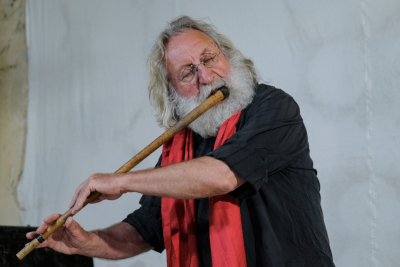
Wednesday, 27 July
Arrival day
Setting up the camp, familiarizing & socializing, free
time.
21.00 – Opening concert performed by Miquèu Montanaro
Followed by campfire, party.
Thursday, 28 July
11.00 – Workshop leaders’ introduction
13.00 – Musical workshop led by Montanaro
21.00 – Csenge Schneider-Lőnhárt – Albert Márkos: Words and
Music – musical performance
21.30 – Attila Szabó/Élboy: Je suis Montanaro –
experimental theater performance
22.00 – Fine arts workshop introductory lecture by Kund
Kopacz
Followed by campfire, discussions.
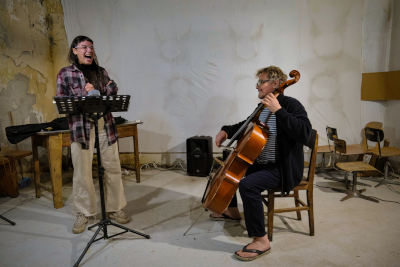
Friday, 29 July
9.00 – Writing workshop
10.00–10.30 – Photo workshop consultation
10.30–12.00 – Musical workshop
12.00–14.00 – Dance rehearsal
15.00–20.00 – Workshop activities
21.00 – Words and Music – musical performance
21.30 – Attila Szabó/Élboy: „Peas spilled on the wall” [It’s
like talking to a brick wall] – experimental theater
performance
22.00 – Tibor Schneider – Balázs Faragó: Projection of films
from previous Minimum Party film workshops..
Followed by campfire, party.
Saturday, 30 July
9.00 – Writing workshop
10.00–10.30 – Photo workshop
10.30–12.00 – Musical workshop
12.00–14.00 – Dance rehearsal
15.00–20.00 – Workshop activities
21.00 – Words and Music – musical performance
21.30 – Attila Szabó/Élboy: The Devil’s Biblea – experimental
theater performance
22.00 – Tamás Márkos: Ordeal of fire – projection of photos
on the professional forum, exhibition opening speech by Ildikó
Lőrincz
23.00 – Party, campfire
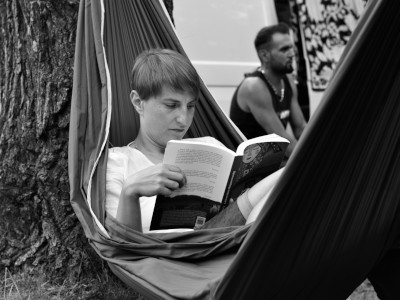
Saturday, 31 July
9.00 – Writing workshop
10.00–10.30 – Photo workshop
10.30–12.00 – Musical workshop
12.00–14.00 – Dance rehearsal
14.00 – Introduction of the Architecture and Philosophy workshop’s
leaders
15.00–19.00 Workshop activities
20.00 – Words and Music feat. Élboy – musical and
experimental theater performance
22.00 – Presentation by Kund Kopacz, the visual arts workshop’s
leader
22.00 – Tibor Miltényi: Esential Form – Projection and debate
by Zsolt Fekete
23.00 – Visit and introduction of Levente Molnár operatic baritone at
the Minimum Party as a former participant of the Minimum Party dance
workshop back in 2000
Followed by Campfire, party.
Monday, 1 August
Morning – Workshop activities
15.00–19.00 – Workshop activities
20.00 – Words and Music – the performance of the musical
workshop
20.30 – Attila Szabó/Élboy: The Little Prince – experimental
theater performance
20.45 – Works of Ádám Lukács dance artist, choreographer form
Miskolc presented by Attila Szabó
21.30 – Film projection of Balázs Bodor
Followed by Campfire, party.
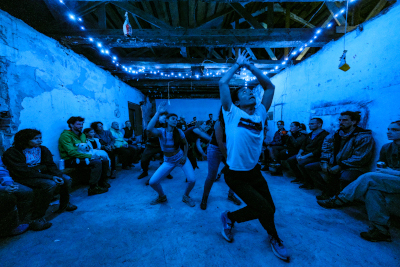
Tuesday, 2 August
9.00 – Workshop activities
15.00–19.00 – Workshop activities
20.00 – Words and Music – musical performance
20.30 – Attila Szabó/Élboy: Tonight’s Élboy is
cancelled – experimental theater performance
20.50 – The Last Performance. In memory of Gyula
Lőrincz – projection
21.00 – Sándor Olivér Murányi: Folyamtánc/Dance Flow –
book launch, the author was interviewed by Ildikó Lőrincz,
fragments from the book were read by Levente Molnár opera
singer.
Followed by Campfire, party.
Wednesday, 3 August
9.00 – Workshop activities
15.30 – Zoltán Bíró: Mine Swepper (The Doom of Terrified
Faces) – installation and play
16.00–19.00 – Workshop activities
21.00 – Production of the dance workshop – premiere
21.30 – Words and Music – musical performance
22.00 – Zsolt Pálfalusi: Climate Anxiety – presentation
within the framework of the professional forum
Followed by Campfire, party.
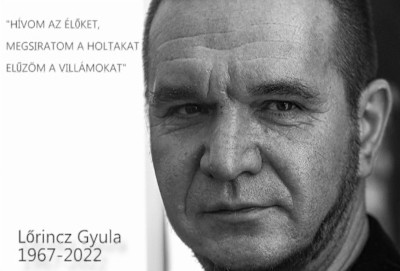
Thursday, 4 August
9.00 – Workshop activities
16.00–18.30 – Workshop activities
18.40 – Minimum Flow – production of the dance and
musical workshop
19.45 – Words and Music – musical performance
24.00 – István Erőss: Nature Art – presentation within
the framework of the professional forum
22.00 – Commemoration ANL – performance in memory of
Gyula Lőrincz (1967–2022)
Followed by Campfire, party.
Friday, 5 August
9.00 – Workshop activities
16.00–18.30 – Workshop activities
18.30 – Béla Losonczi: Suitcase Exhibition – opening of
the painting exhibition was addressed by Imola Részegh,
philosopher
20.00 – Words and Music – musical performance
20.30 – Béla Mester: The Strange Life of Erdélyi Bojót
– presentation within the framework of the professional
forum
22.00 – Zsolt Pálfalusi: The Avantgarde and the Political
Left – presentation and discussion within the framework of
the professional forum
22.30 – Debate night of the philosophy workshop led by Zsolt
Pálfalusi
Followed by Campfire, party.
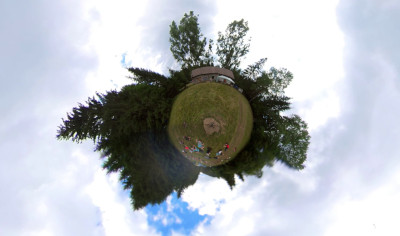
Saturday, 6 August
9.00 – Workshop activities
18.00 – Visual tour, viewing the works born during the camp,
with the participation of the dance workshop, including the
presentation of the works of the visual workshop, dance
workshop, photo workshop and craft workshops.
20.30 – Minimum tremendum... (viewing a VR-film)
20.45 – Photo Slide Show
21.45 – Pottery fair
22.00 – Dorottya Szemigán: Mural – interactive painting
exhibition
22.20 – Presentation of the film workshop:
Pseudo-metamorphosis (short fiction) by Csenge
Schneider-Lőnhárt, Dorottya Szemigán; Minimum Tremendum
by Konrád Mihat, Csongor Losonczi; Music by Miquèu
Montanaro; Go origo by Titanilla Sárközi, Zsuzsanna
Endes, Attila Vass; Music by Montanaro and the Musical
Workshop; ‘Cause why not? by Zsolt Kántor, Eszter
Szőllősi, Zsolt Kovács, Katalin Molnár, Gergely Fogarasi, Vince
Schneider, Tamás Márkos; The Ballad of Lizzie with an
Axe by Zsolt Pálfalusi, Balázs Bodor, Csenge
Schneider-Lőnhárt, Konrád Mihat, Fruzsina Pusztai, Titanilla
Sárközi; Minimum tremendum by Balázs Faragó, Tekla
Nagy, Junya Ishii; Music by Junya Ishii; Montanaro
sings by Tibor Schneider; Dress in Water by Ágnes
Szabó, Konrád Mihat; Deep-rooted pensioners by Hanna
Köllő, István Kovács, Apor Szabó, Nóra Csoma, Zoltán
Benkő; The Ballad of Sheperd Béla by Eszter Szőllősi,
László Kolozsvári, Béla Mester, Zsolt Kovács; Music by Tamás
Márkos; The Flying Turtles from Kászon animation by
Katalin Molnár, music by Albert Márkos and his musical
workshop; The Secret Workshop by Balázs Faragó, Kund
Kopacz; The Shadow of Trees dulls the Colors on Your
Horizon by The Writing workshop and the Film
workshop; The Last Performance (In memory of Gy. L.) by
Balázs Faragó; Documentary of the Montanaro concert by
Viktor Paszterko, music by Montanaro and the Musical
Workshop.
Followed by End-of-camp party.
Sunday, 7 August
Camp break, going home.
The twenty-sixth edition of Minimum Party creative camp and professional
forum
July 27 – August 7, 2022 near the village of Kászonaltíz,
at the mouth of the Tiszás stream.
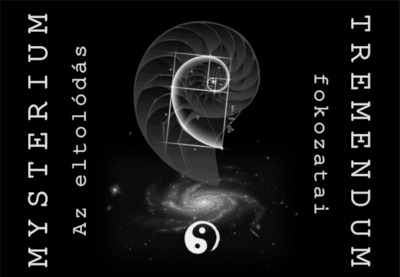
The inspiration for the 26th Minimum Party camp will be the
aesthetics of beauty that is both intimidating and
captivating. The ongoing war situation makes it relevant to play
with the idea of co-existing opposites this year. We are
confronted with visions of ethos and destruction, self-sacrifice
and sin. We are reminded of Mysterium tremendum et fascinans -
evil can be attractive, not just beautiful, and beautiful can be
frightening, but we don't want to decide where the artist should
stand. Let art not moralize. The emphasis in the camp is on
formal experimentation rather than reflections on society, also
because of the 'out of civilisation' nature of the
location. Therefore, we should think of attraction and repulsion
rather than more general concepts.
Degrees of displacement
But let's think even further: this time, we would focus not so
much - as we often do as slogans - on the simultaneity or
balance of the two sides of the coin, but on the shift of
emphasis between the two poles - in either direction. On the
unstable balances, on the unhinging of the beautiful and the
ugly, the dark and the light, on the delicate balance, on
'delicate taste'. Of what should there be more, music or word,
image or sound? Of motion or silence? Enjoy this year's Minimum
Party!

The camp will start with the performance by the Occitan musician Miquèu Montanaro. Miquèu Montanaro, also known as the troubadour of Provence, is a travelling musician from the Occitan minority in France and a well-known composer in Europe. He also speaks Hungarian, has already visited our camp five times, and his workshops and performances have been received with great enthusiasm by the campers.

Music Workshop (Albert Márkos – Budapest); visual workshop (Kund Kopacz – Miercurea Ciuc–Bucharest–Eger–Pécs); film workshop (Gergely Fogarasi – Budapest); photography workshop (Tamás Márkos – Cluj); dance workshop (Ádám Lukács – Miskolc); architectural workshop (Elemér Benedek – Mány, Hungary); writing workshop (Sándor Olivér Murányi – Odorheiu Secuiesc); philosophy workshop (Zsolt Pálfalusi – Budapest); handicraft workshop (Fruzsina Pusztai – Cluj); Élboy experimental theater workshop (Attila Szabó – Miskolc).

Weaving the thread of the text into the needle of the rhythm. (Péter Závada) – Music Workshop, led by Albert Márkos (Budapest).
Contemporary music operates within a single continuum - from
the often exhilarating ideas of "letting the sound be itself" to
the sometimes grotesque extremes of "self-expression". (John
Butcher)
The Words and Music workshop is named after Samuel Beckett's
radio play of the same name. Its aim is to give voice together
to what we usually do separately.
In the radio play, Joe is the words, Bob is the music and Brekk
is the third person who, as the name suggests, exists somewhere
in between, between the musical and the lexical sense. The text
talks, the music plays, they respond to each other, argue with
each other, confuse each other, tame each other. Sometimes they
collaborate and sometimes they don't.
In the workshop, we analyse texts we find and texts written by
ourselves or by the campers: the melodic, rhythmic and formal
aspects of the text, which we set to music and perform. We
explore and practice the relationship between composition and
improvisation in music. No previous musical training is
necessary.

Exploring nature through art – Visual (art) workshop, led by Kund Kopacz (Miercurea Ciuc–Bucharest–Eger–Pécs).
Nature and the nature of things, the (aimless) intention of
visual art is unfathomable.
The apparent contradiction between the theme and the driving
idea is misleading, since the free individual who feels, thinks,
seeks and (therefore) finds, possesses the qualities that enable
him, in a rare, rare and therefore extremely fortunate, fleeting
moment of reflection, to bring together and understand the
matters of life. The catharsis becomes an experience of a
confusion of contradictory elements, which passes away because
it is coherent and irrational. It can be grasped when the eye is
curious, the gaze is searching, the glance is feeling and the
perception is comprehending.
In order to unfold the themes and topics, the workshop will
start with an evening of lectures, where a wide range of
creative attitudes will be presented, in order to prepare the
ground for the "informative" tours in the village, the fields
and the forest, which will allow creative processes to
begin. True to the possibilities offered by the environment, we
are looking for those things that can be expressed and captured
in a striking and fresh way with a videocam or a shovel, a photo
camera or an axe, a voice recorder or a spar, a drone or a
manure, a tractor or the body, day or night.

Film Workshop, led by Gergely Fogarasi (Budapest).
In line with the camp's motto, this year's theme of the film
workshop focuses on the essential, fundamental contradiction of
filmmaking. When we make a film, we create reality, we create
inner worlds by adding meaning and interpretation through
filming a "slice" of space and time.
The dramaturgy of visual language transforms the sequence of
images into a story, objectifying the totality of internal
subjective truth.
When you film, capture, document something, you are following
the euphoria of divine creation in human steps. You leave an
imprint of the always wavering, unstable moment. But the angle
you choose for the setting is only a representation of the
reality of the subject.
The fundamental moral dilemma of filmmaking is the contradiction
of how to capture reality, the present moment, in its totality,
so that the chosen point of view from which you shoot it becomes
a universe, the "inner truth" of the film. How can the elusive
eternity of the moment be captured as objectively as possible,
how can time and space itself be captured? So that one can say:
'DOCUMENT JESTY'.
This year, in the film workshop, we will continue the guiding
idea of the "subjective document / objective subject" and will
make films in a free way, using various genres and styles of
experimental video art. During the experimental film workshop,
workshop members are free to shoot and test their ideas. We
always welcome your own writings, poems and stories, from which
we can take inspiration together. Everyone can try themselves as
directors, writers, cameramen or even actors, and there is the
possibility of collaborating with the other workshops in the
camp too. You are also free to get involved in the filming and
editing of short films and documentaries made in the film
workshop.
An important part of the workshop will be an insight into the
practice of documentary filmmaking. On the last night of the
camp, the finished films will be projected.
The one and a half week workshop will consist of four main
stages of creation:
I. brainstorming, writing short scripts and dialogue
II. shooting, filming, video tests
III. creative work with other workshops
IV. basic editing skills, sound editing
If you can, please bring a camera, a laptop, any equipment that
can help you with the filming!
A selection of completed works from previous years is available here: MP short films on YT

Documenting the camp by means of personal photography – Photo Workshop, led by Tamás Márkos (Cluj).
Does objectivity exist in documentary photography?
Where and how does objective documentary photography meet
personal photography?
What makes documentary photography personal?
We invite the participants of the workshop to use the tools of
photography to document any event or detail of the Minimum
Party.
You can choose the approach of street photography by capturing a
decisive moment, or you can create portraits, or even document
the work of one or more workshops.
You can focus on one person or several/a family and record their
activities for one or more days. But it can be documented by
those people - organizers, volunteers, cooks, etc. - also the
activities of those who enable the implementation of the Minimum
Party.
We can choose landscape photography or even an abstract
approach.
Regardless of the genres and topics chosen by the participants,
the main focus is on personal documentary photography, within
which we encourage and guide the participants to find what is
special and unique in their own vision. To be able to
distinguish between clear and obvious images and photography
based on personal impressions, feelings, and mental states. They
can record inner poetry, everyday life, mystery, the
unspeakable, madness, or stillness...
You can use any digital camera, even a mobile phone. It is not a
requirement, but if you have a laptop with a photo processing
program, please bring it with you. Alternatively, you can
process your recordings on a tablet or a mobile phone. The
selected pictures will be projected at the end of the camp. It
is good if you have a USB memory stick or an external hard
drive. There is no Internet download option in the camp.
This year, we do not provide a darkroom, and we cannot undertake
the development and enlargement of photos taken with analog
technology. The workshop is open to beginners, advanced and
professional photographers alike, and after the initial
consultation, we will regularly consult with the participants
individually or in small groups during the camp. At the end of
the camp, we will make a selection of the strongest and most
personal works of the participants, which will be exhibited in
print or projected using a projector.
"Record not what something looks like, but what you perceive it
to be"
"Be a poet, not a technical writer."
(David Alan Harvey)
“Try to get past the overly obvious images. Try to interpret
what you see instead of simply recording it.”
(Marie Ellen Mark)
“I enjoy photos that take me to a place I've never been
before. I am attracted to pictures that show something
unexpected, something particularly unique from the world. I like
it when a photo is surprising, mysterious, has some little twist
or wit that somehow makes it magical.”
(Alex Webb)
"Photograph who you are."
(Bruce Gilden)

Dance workshop, led by Ádám Lukács (Miskolc).
"If my strength fails me, it is still beautiful to dare, Mere
will is a merit in great things." (Sextus Propertius)
The great shock, the enlightenment and knowledge, the
understanding of the reasons, the fear and the compassion, after
that comes the peace of the heart. Not omniscience, but
responsibility for everything, comfort and understanding
solidarity. In today's world, dancing, creating, and
choreographing have been of great help to me in this. I believe
that by clinging to the shipwrecks of culture, responsibility
and solidarity, and helping each other, we can survive in the
midst of attractions and repulsions the deterioration of the
world that has been unleashed upon us by the many calamities of
this century. In today's world, the dominance of black and white
balances between the popular and the more serious tone,
everything ripples, sometimes it gets excited, sometimes it
becomes too lyrical and slow - just like the art of dance
itself.
The struggles of our world are life-like replicas of a dance
theater performance - dance as a visual experience is the
(external-internal) struggles of our world. My goal during the
days of the creative camp is to articulate these contrasts
through movement, which speak about the world, the world in
which we live (we have lived and will live), and the references
they use become clear to us through experience, learning, and
feeling, and beyond the aesthetic experience, they also
stimulate thinking. Our society is full of inhibitions,
wayfinding, fear, belonging somewhere or eccentricity -
independent of themselves or dependent on something. We must and
can eliminate these barriers, fears, and questions - for my
part, in this case, with the art of dance. But not in the way
that we receive and give ready-made answers. The exciting thing
and the challenge is having to fight we have to discover and
find the connection point between our emotions, our thoughts and
the finished work. To lead ourselves - and later the recipient
as well - to curiosity, thinking, free association, the ability
to live in it, creativity, the ability to solve problems and to
be able to interpret certain situations freely. The sequence of
movements, the choreography, reveals the possibilities of the
human body as a visual element, which frees itself from
storytelling, thus the choreography gives free space to the
imagination and provides many interpretation possibilities - so
it focuses on pure movement. We can see formal movements, so to
speak, in which order and chaos follow each other. And what do
all these mean exactly, what is important, what is common in all
of them, that "Education for art through art is nothing but
education for life." To lead ourselves – and later the recipient
as well – to curiosity, thinking, free association, the ability
to live in it, creativity, the ability to solve problems and to
be able to interpret certain situations freely. The sequence of
movements, the choreography, reveals the possibilities of the
human body as a visual element, which frees itself from
storytelling, thus the choreography gives free space to the
imagination and provides many interpretation possibilities - so
it focuses on pure movement. We can see formal movements, so to
speak, in which order and chaos follow each other. And what do
all these mean exactly, what is important, what is common in all
of them, that "Education for art through art is nothing but
education for life." To lead ourselves – and later the recipient
as well – to curiosity, thinking, free association, the ability
to live in it, creativity, the ability to solve problems and to
be able to interpret certain situations freely. The sequence of
movements, the choreography, reveals the possibilities of the
human body as a visual element, which frees itself from
storytelling, thus the choreography gives free space to the
imagination and provides many interpretation possibilities - so
it focuses on pure movement. We can see formal movements, so to
speak, in which order and chaos follow each other. And what do
all these mean exactly, what is important, what is common in all
of them, that "Education for art through art is nothing but
education for life." to the ability to solve problems and to be
able to interpret certain situations freely. The sequence of
movements, the choreography, reveals the possibilities of the
human body as a visual element, which frees itself from
storytelling, thus the choreography gives free space to the
imagination and provides many interpretation possibilities - so
it focuses on pure movement. We can see formal movements, so to
speak, in which order and chaos follow each other. And what do
all these mean exactly, what is important, what is common in all
of them, that "Education for art through art is nothing but
education for life." to the ability to solve problems and to be
able to interpret certain situations freely. The sequence of
movements, the choreography, reveals the possibilities of the
human body as a visual element, which frees itself from
storytelling, thus the choreography gives free space to the
imagination and provides many interpretation possibilities - so
it focuses on pure movement. We can see formal movements, so to
speak, in which order and chaos follow each other. And what do
all these mean exactly, what is important, what is common in all
of them, that "Education for art through art is nothing but
education for life." and provides many interpretation
possibilities - so it focuses on pure movement. We can see
formal movements, so to speak, in which order and chaos follow
each other. And what do all these mean exactly, what is
important, what is common in all of them, that "Education for
art through art is nothing but education for life." and provides
many interpretation possibilities - so it focuses on pure
movement. We can see formal movements, so to speak, in which
order and chaos follow each other. And what do all these mean
exactly, what is important, what is common in all of them, that
"Education for art through art is nothing but education for
life."

Architectural workshop, led by Elemér Benedek (Mány, Hungary).
Due to the proximity to nature in the camp, the building,
structure, and installation designed here will certainly be
different from what can be called a "human warehouse" in an
urban environment, stacked side by side and on top of each
other, and a designer living in "boxes" creates while hunched
over his drawing board/laptop.
The impact of our built environment on nature can certainly be
called harmful, especially when you see images of
war. Demolished buildings in cities that require enormous
resources and materials will become hazardous waste.
Reflecting on these, the question arises, do we have the right
to continue this way? Do temporary, replaceable, recyclable
buildings belong to the future? How can we reduce the footprint
we leave behind in nature? How long do we have to build for
eternity, or will we live in naturally decomposing shelters made
of natural materials using minimal resources? Are we going to
move underground and/or wander with portable houses in search of
a still livable environment?
One of the best places to practice and experiment is the Minimum
party. Let the clearing be our living room, the campfire our
kitchen, and the stream bank our bed. Let's create an
"aestheticized" shelter for the homeless, build a love nest,
create a poet's pulpit.

"In the beginning was the Word." – Writing workshop, led by Sándor Olivér Murányi (Odorheiu Secuiesc).
"In the beginning was the Word." After that, it became the combination of text and music, that is, the song. Literature is unthinkable without music. Not only poetry, but also prose has rhythm and melody - since the first storyteller was chased away by the tribe celebrating the fall of the mammoth in prehistoric times. We don't know his name, but he was the first writer and poet. Since then, it has been a long journey from Aesop's fables to Cervantes' Don Quixote , from there to Goethe's Faust , and then to Ádám Bodor's Sinistra district . According to Péter Nádas, a stupid prose writer is not a prose writer. That is why the work of the writing workshop takes place by discussing reading and the read text. Only then will the creation and structural analysis of popular verse forms such as haiku and prose forms such as the short story take place. Our password:Don't just write, read too! At the same time, our workshop, together with the other workshops, tries to be the catalyst of the Minimum Party, taking part in its overall artistic mission. I look forward to seeing you so that we can discover and admire the musicality of literature together.

Philosophy workshop, led by Zsolt Pálfalusi (Budapest).
During the course, we deal with a not-so-fun, but all the more exciting topic, which has always been at the top of the list in the arts. The problem of death, the great mythological themes of life conceived from the point of view of destiny, is a challenge not only for the religious consciousness. During the seminar, Jacques Derrida, The Gift of Deathwe will reflect on his short essay, which brings into our field of vision the more than two thousand five hundred year old tradition of pondering death. The aim is to rethink concepts such as crisis, trauma, therapy, forgiveness, invalidation, anger and fate. We all think something about these concepts, but we are by no means sure that we see them correctly. The goal is to expand the horizon within which we can create more conceivable and freer ideas about the things that define us in the deeper context of our lives. The course ends with a joint performance, which we brainstorm and create together during the sessions.
Minimal survival kit – craft workshop, led by Fruzsina Pusztai (Cluj).
The motto of this year's Minimum Party ceramic and craft
workshop is the survival kit.
What is this kit? – it depends on the situation: first-aid kit,
porcelain plate set, talismanic necklace, Swiss army knife. A
list of our needs and wants in the "given situation". The
activity of the workshop is aimed at mapping the form and
function, essence (purpose) and surface aesthetics of objects,
found, imagined or conceivable objects.
The negotiating activity mainly means ceramics and clay making,
but it is also open in the direction of DIY from other materials
found on site. The clay is fired in an open-fire, wood-fired
ceramic kiln. Glazing is also possible if the tight time frame
allows, and you will most likely also have a ceramic disc at
your disposal. All interested parties (adults and children) are
welcome, regardless of previous education and experience!

Tibor Schneider, Csenge Schneider-Lőnhárt, Bence Schneider, Vince Schneider (Cluj), Ildikó Lőrincz (Odorheiu Secuiesc)
Romanian Government – Department of Inter-Ethnic Relations
(DRI),
National Cultural Fund Program (Budapest),
Democratic Alliance of Hungarians in Romania and Communitas
Foundation (Cluj).
Mayor's Office of Plăieșii de Jos
Kazun Cultural Association,
Dr. Lukács Mihály Primary School (Plăieșii de Jos),
János Tuzson Primary School (Cașinu Nou).
The Hungarian-language broadcast of Romanian Television
We report on the 25th Minimum Party creative
camp
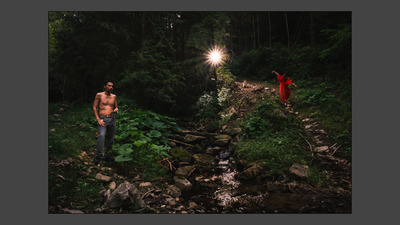
Between July 28 and August 8, 2021, the Minimum Party creative
camp and professional forum took place for the 25th time at the
usual place at the foot (mouth) of the Tiszás stream, in the
village of Kászonaltíz, Székelyföld. Although in smaller
numbers, we created with great enthusiasm this year as well,
finding special answers to our questions due to the special
situation. The questioning of the twenty-fifth creative camp was
based on the motto "Productive uncertainty". The idea of fertile
uncertainty considered the unusual situation, or the state of
mind resulting from it, the state of mind of uncertainty to be
fertile, and encouraged the participants in the camp to clarify
this within themselves and to constantly think further. How is
it possible that the formulation of something does not bring us
certainty, but that we remain in the state of search? We sought
the answer if creation can solve incertude.
In addition to the presentation of artistic, theoretical and
literary creative works, some social, dance and aesthetic
problems were also raised.
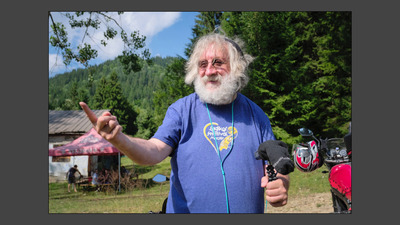
Music workshop (Miquėu Montanaro – France), Contemporary nature – visual art workshop (Alpár Péter – Bicfalău, Covasna county), film workshop (Gergely Fogarasi – Budapest), photography workshop (Tamás Márkos – Cluj-Budapest-London), dance workshop (Ágnes Szabó – Budapest), architecture workshop (no leader), interview workshop (Ildikó Nagyálmos – Odorheiu Secuiesc), philosophy workshop (Zsolt Pálfalusi – Budapest), craft workshop (Éva Végh – Cluj),
In addition to the workshop leaders, the following performed at the professional forum: folk dancer and dance pedagogue Elemér Kádár, photographer Zsolt Fekete, visual artists István Antal, Gábor Csongor and Antal Malvina Szigeti, sociologist Viorela Ducu, esthete Zsolt Pálfalusi, performer Endre Bölöni Dix.
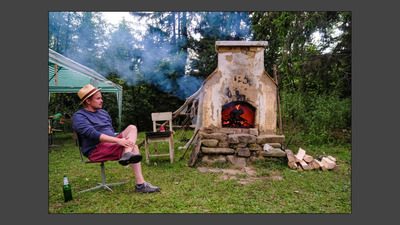
Wednesday, 28 July
Arrival day
Setting up the camp, familiarizing & socializing, free
time.
Party, campfire
Thursday, 29 July
9.00 – Workshop activities
21.00 – Tibor Schneider – Balázs Faragó: Nostalgia Film
workshop projections 1.
Followed by campfire, party
Friday, 30 July
9.00 – Workshop activities
13–15 – Workshop leaders’ introduction
21.00 – Tibor Schneider – Balázs Faragó: Nostalgia Film
workshop projections 2.
Followed by campfire, party

Saturday, 31 July
9.00 – Workshop activities
21.00 – István Molnár: 9 years of Minimum Party in 9
Chapters – Documentary film projection
23.00 – Party, campfire
Sunday, 1 August
9.00 – Workshop activities
19.00 – Elemér Kádár: Productive Uncertainty –
interactive presentation within the framework of the
professional forum
21.00 – Attila Szabó (Élboy): Rock, paper, scissors
(2019) – Projection of an experimental theater
performance
22.00 – Tibor Schneider – Balázs Faragó: Nostalgia Film
workshop projections 3.
Followed by campfire, party.
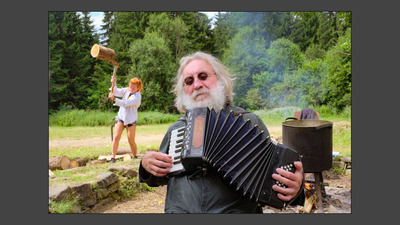
Monday, 2 August
9.00 – Workshop activities
21.30 – Presentation of the works of artist Malvina Antal –
presentation within the framework of the professional
forum
22.30 – Attila Szabó (Élboy): Memory (2019) –
Projection of an experimental theater performance
23.00 – 23.00 – Tibor Schneider – Balázs
Faragó: Nostalgia Film workshop projections 4.
Tuesday, 3 August
9.00 – Workshop activities
18.30 – Béla Mester: The Russian Cuisine – presentation
within the framework of the professional forum
21.00 – István Antal: Playing area – presentation of
the artist’s works
22:00 – Alpár Péter: Contemporary Nature – presentation
of the artist’s works
23.00 – István Molnár: 9 years of Minimum Party in 9
Chapters – projection of the documentary film
24.00 – István Molnár: Nonline Minimum Party Album
Release – release performance of the Minimum Party Album year
2011-2019
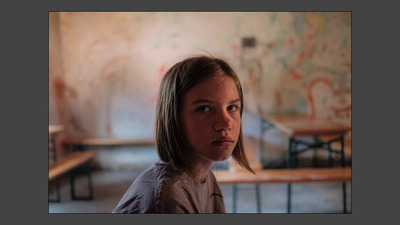
Wednesday, 4 August
9.00 – Workshop activities
18.30 – The music workshop’s release concert
20.30 – Viorela Ducu – Áron Telegdi Csetri: Children in
Times of Uncertainty – presentation within the framework of
the professional forum
22.00 – Tamás Márkos: Musical Slideshow – photo
slideshow with live music performed by Miquèu Montanaro, Tamás
Márkos
23.00 – István Molnár: 9 years of Minimum Party in 9
Chapters – last part of the film about the camp
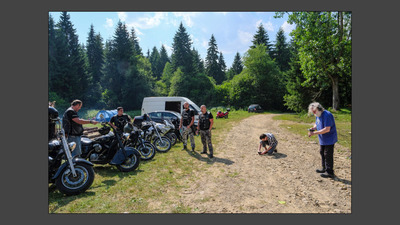
Thursday, 5 August
9.00 – Workshop activities
15.30 – Zsolt Fekete: Endless Movie – watching the
movie in the auditorium
16.00 – Tombola with the raffle of the works of children
participating at the camp
19.00 – Writer and journalist Ildikó Nagyálmos reads her poems,
discussion afterwards
21.00 – Élboy projection
22.00 – Zsolt Pálfalusi: The Art Project’s Morfology –
presentation and discussion within the framework of the
professional forum – előadás és beszélgetés a szakmai
fórumon
23.30 – Endre Bölöni Dix: Performance
24.00 – Tibor Schneider – Balázs Faragó: Nostalgia Film
workshop projections 5.
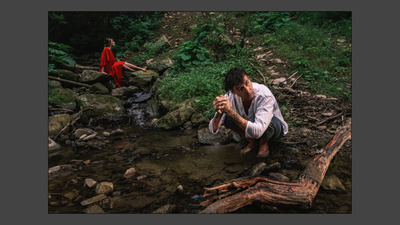
Friday, 6 August
9.00 – Workshop activities
19.00 – Zsolt Fekete: A Book Born in Uncertainty – book
launch, lecture with the collaboration of Endre Bölöni Dix
21.00 – Tamás Márkos: Being Elsewhere – poems, photos,
music, dance at the professional forum
21.30 – Gábor Csongor Szigeti: Found Works –
projection, lecture and discussion within the framework of the
professional forum
22.30 – Debate night of the philosophy workshop led by Zsolt
Pálfalusi
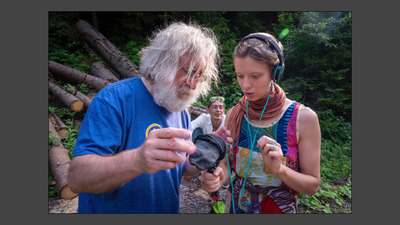
Saturday, 7 August
11.00 – Dismantling of the pottery kiln, fired ceramics’
presentation led by Éva Végh
15.00 – Visual tour, viewing the works made during the camp,
with the participation of the dance workshop:
1. Balázs Kontur: Serene exposure or
exposed serenity – installation
2. Alpár Péter: Stone and Line –
installation
3. Zsolt Molnár: Magzatok –
interactive installation
4. János Péter Varga: Cím nélkül –
installation of carved works
5. István Molnár: Light-pipes,
subtitle: Come back Zacsek to Zacsek, who hasn’t been
in the camp for more than 10 years – installation
6. Malvina Antal: I’m also a layer which
helps mature the land – how a rock is formed
7. Endre Bölöni Dix and Miquèu
Montanaro: Musical Instrument – kinetic sculpture,
ready made from Tiszástő
18.00 – Duncan Watson: Stubborn Horses – puppet show,
performed by Duncan Watson, Endre Bölöni Dix, music by Tamás
Márkos
20.30 – Photo workshop exhibition opening
21.00 – Zsolt Pálfalusi: Performance. Assisted by Ágnes
Szabó, Duncan Watson
22.00 – Presentation of the film workshop:
Constant mortal process, directed by Malvina Antal,
camera by Tibor Schneider, music by Miquèu Montanaro, editing by
Malvina Antal, Balázs Bodor; Where maybe, Csenge
Schneider-Lőnhárt’s performance, narrated by Ildikó
Nagyálmos; Productivity certainty, written and directed
by Zalán Kis-Tóth; Mom?, animator: Katalin Molnár, twin
voices: Gergely Fogarasi, Balázs Faragó, music by Miquèu
Montanaro; Mes amies, by Tibor Schneider, music by
Miquèu Montanaro; Uncertain Heights, written, directed
and edited by Katalin Molnár, music by Viola Lengyel, camera by
Gergely Fogarasi; Hansel and Gretel, directed by Péter
György Végh Jr., screenplay by Ágnes Molnár, Péter György Végh
Jr., camera by Ágnes Molnár, Péter György Végh Jr., editing by
Katalin Molnár, Péter György Végh Jr.
Followed by End-of-camp party.
Sunday, 8 August
Camp break, going home.
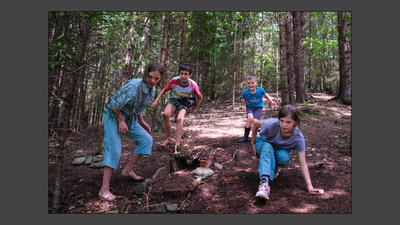
Romanian Government – Department of Inter-Ethnic Relations
(DRI),
National Cultural Fund Program (Budapest),
Democratic Alliance of Hungarians in Romania and Communitas
Foundation (Cluj).
Mayor's Office of Plăieșii de Jos,
Kazun Cultural Association,
Dr. Lukács Mihály Primary School (Plăieșii de Jos),
Tuzson János Elementary School (Cașinu Nou)
Erdély.Ma,
The Hungarian-language broadcast of Romanian Television
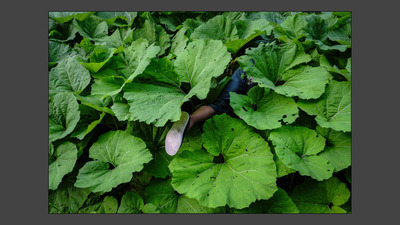
The twenty-fifth Minimum Party creative camp in the wake of the
pandemic
July 28 – August 8, 2021 near the village of Kászonaltíz, at the
mouth of the Tiszás stream.
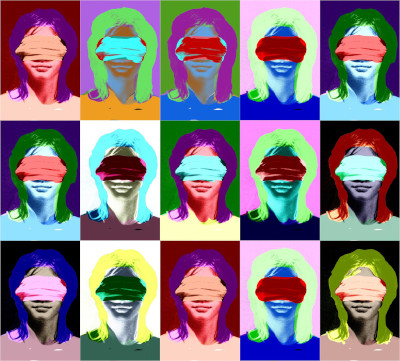
This uncommon situation and the resulting state of mind, the uncertainty might be productive when it encourages the individual to clarify it, to keep rethinking it. The wording of the situation we are currently in has a stimulating effect on creativity, but it’s possible that as soon as we formulate the given situation, we already leave the state of mind of productive uncertainty. Is there a possibility to maintain the creative state arising from this productive uncertainty? Could it be possible, that wording something won’t bring us the certainty and we still remain in the state of spirit of searching? How long can we maintain this situation? Outside our existential framework how can we maintain an unstable condition? Uncertainty characterizes in a scaring manner the current period, we should aim to find a productive, creative situation, we should abstract and constantly seek, search to find that something which makes the uncertainty bearable. We are seeking the answer to the question how the process of creation can solve such an uncertain situation. The creative individual believes that he is making something meaningful, useful during the process of creation, which can also be experienced, relived by others, therefore by analyzing and dealing with his own situation and seeking an answer or a solution one can help others as well.

Music Workshop (Miquėu Montanaro – France), Contemporary nature – visual Art Workshop (Alpár Péter – Bicfalău, Covasna county), Film Workshop (Gergely Fogarasi – Budapest), Photography Workshop (Tamás Márkos – Cluj-Budapest-London), Dance Workshop (Ágnes Szabó – Budapest), Architecture Workshop (no leader), Interview Workshop (Ildikó Nagyálmos – Odorheiu Secuiesc), Philosophy Workshop (Zsolt Pálfalusi – Budapest), Craft Workshop (Éva Végh – Cluj).

Visual art workshop, led by Alpár Péter (Bicfalău).
In a state of uncertainty, we instinctively look for new points of reference that give us the stability to reassess our existence. One of the best tools for this search is art, especially its free, innovative tendencies. A hidden but constant partner in our existence is the natural space around us. The history of humanity can also be understood as a history of coexistence with nature, and this is one of the fundamental questions of uncertainty today: how we define our individual and collective relationship with the natural space (climate question).
Contemporary art movements that manifest themselves in and seek close collaboration with natural space are attempts to resolve this uncertainty. Participants in the workshop will gain insights into their spirit, both theoretical and practical. The workshops will provide opportunities for individual, meditative creative presence and collaborative creative work in the form of performative works and installations.

Music workshop, led by Miquėu Montanaro (France).
Make fire out of every piece of wood. To create music from every sound, every image, every occasion, every thought, every breath... With instruments, without instruments, in the stream, in the forest, even with silence.
Fertile uncertainty is the destiny of the musician! Always starting over. Always starting from scratch. Always starting from silence and trying things out! That's what we will do. We will know exactly what form it will take when we are together at the Minimum Party.

Uncertain productivity / Capturing the moment – Film workshop, led by Gergely Fogarasi (Budapest).
Filmmaking is nothing other than a constantly fertile uncertainty. When you film something, capture it, create it, you follow in human steps the euphoria of divine creation. The angle of vision, the frame you choose, is an unrepeatable angle to perceive the world. It is the elusive eternity of the moment that must be grasped, caught, time itself must be grasped and then passed on. To leave an imprint of the ever wavering, uncertain moment. To be able to say one day: "IT IS TAKEN".
This year in the film workshop we will use the catchword "precarious fertility" to make films freely, using different genres and styles of video art.
During the 10 days of filmmaking workshops, workshop members will be free to shoot and test their ideas. You are welcome to bring your own ideas, short descriptions and stories to work from. But you can also join in the shooting of 2 short films that will be made in the film workshop. During the filming, everyone can try their hand at directing, writing, cinematography or even acting. During the workshop, you can also collaborate with other film studios. On the last day of the camp, the finished films will be screened.
This year's film workshop will focus on two themes. We will respond to the epidemic and the human relationships that are changed by it, and this year we will also look at the relationship between creativity and art.
The 10-day workshop will consist of three main creative
phases:
I. Brainstorming, script development
II. rehearsals, shooting, video experiments
III. editing basics, sound editing
In the evenings, there will be an analysis of the material shot during the day, followed by film screenings (workshop films from previous years for the jubilee Minimum Party) and informal analytical discussions on the films seen.

In close proximity – Photography workshop, led by Tamás Márkos (Cluj-Budapest-London).
We invite those who are open-minded, who are not satisfied with mere observation, and who dare to get closer to others, both literally and figuratively, on an inner photographic journey. If necessary, we can also touch on camera settings, image processing, the use of artificial light - in the context of the following topics:
How can we see through our own and others' limitations that hinder us from revealing our inner world?
How can we reveal and express inner or outer characteristics that are unique to the individuals we choose to photograph?
How can we witness the emotional and physical intimacy between people that is not usually revealed?
How can we sense the texture of skin, hear breath, smell someone in a photograph?

Can you dance a landscape? – Dance workshop, led by Ágnes Szabó (Budapest).
Many of us think of dance as a set of concrete forms and/or specific movements. For the butoh dancer, however, the choreography is based on the so-called "inner landscapes" that are constantly changing during the dance: this is how he or she avoids falling into the trap of a static form and thus losing the very thing he or she wants to capture, namely life subject to change.
The subtle movements of his body seem to transform the space around him... meaning is revealed in the dependencies that exist then and there in the representation of the "inner landscape"... in this space of tension of emptiness, the possibility of the construction of "truth" is created.
Our aim in this year's dance workshop is to create a shorter dance performance, even in collaboration with other workshop participants!

Architecture workshop, Spontaneous building without a leader
A group of campers, driven by their own ideas, with professional and amateur participants who have been returning for years, is being formed in a tentative/certain way. Constructed works should be certain, but this time the uncertainty of the theme can be visually expressed in structurally stable structures. The result can be frightening.

Philosophy workshop, led by Zsolt Pálfalusi (Budapest).
According to a legend in the political bestiary, Khrushchev said at a party meeting, "Communism is on the horizon". A comrade shouted, "Comrade Khrushchev! What is the horizon?" And Khrushchev snapped, "Look it up in the encyclopedia." "The horizon is an imaginary line separating the sky from the earth, moving away as we approach it."
The anecdote is a scholastic example of the difference between fertile and barren uncertainty that should not be underestimated. Throughout history, a succession of philosophers have addressed Aristotle's observation that the soul spends more time in error than in truth. Descartes develops a separate ethics (morale par provision) for the time when we are in the dark about the metaphysical foundations of our lives, Kant does not think it possible to theoretically resolve the antinomies of pure reason, Nietzsche speaks of the "spirit of difficulty" and of the love of the fact in the absence of cognition, and Heidegger identifies the Nothing (Nichts) as the basis of our existence, which causes our life to unfold on the horizon of an unknown history.
Later thinkers in the anti-humanist tradition, such as Maurice Merleau-Ponty, Marc Richir or Gilles Deleuze, already mark the ambiguity that is constantly present between theory, which extends into infinite cognition, and practice, which demands immediate decisions, as a kind of 'wild domain' or 'nomadic musk' of thought, which is beyond the control of thought.
In this philosophical workshop, we will look at some versions of the response of the thinkers mentioned above to the question of what is meant by the problem of the horizon, which is becoming more and more distant as we approach it, and which, alongside our everyday lives, tests artistic practice in particular as to its ultimate purpose and meaning.

Interview workshop, led by Ildikó Nagyálmos (Odorheiu Secuiesc).
Uncertainty is not the most attractive state, but we can make it exciting by looking for some certainty. It's OK if we don't know the answer to something, let's set out to find out. Uncertainty forces us to find answers and solutions that we would not have thought of before. The questioner should always approach the subject with a sincere desire for curiosity, with total humility and devotion.
In this year's camp, it is up to us to elicit from our subjects the fascinating answers that they may eventually wonder about. To latch on to a thought, to keep a sentence rolling, so that our subjects can put into words what visuality cannot fully convey.

Craft workshop, led by Éva Végh (Cluj).
Productive uncertainty brings out survival strategies. Playing around with the idea that everything in the world will close and I will be left on my own without shops etc., we work with what we have. Therefore, there are two lines to the craft workshop. The first would be pottery. That's the old-fashioned, or pre-Columbian, pre-wheel, pre-disk method. Pickle jar, loop jar, slab jar. Utensils, plates, mugs, containers. Carving clay somewhere, drilling, filtering, etc.
The other line is weaving-weaving. Here we would cut up existing polo shirts, t-shirts, make bags, giant "world webs" etc. The other is the use of natural materials, weaving. So the point of this year's craft workshop: we cook with what's in the pantry!

Photo-video documentation group: Tibor Schneider, Csenge Schneider-Lőnhárt, Bence Schneider, Vince Schneider (Cluj)

Romanian Government – Department of Inter-Ethnic Relations
(DRI),
National Cultural Fund Program (Budapest),
Democratic Alliance of Hungarians in Romania and Communitas
Foundation (Cluj).
Mayor's Office of Plăieșii de Jos,
Kazun Cultural Association,
Dr. Lukács Mihály Primary School (Plăieșii de Jos),
Tuzson János Elementary School (Cașinu Nou)
Erdély.Ma,
The Hungarian-language broadcast of Romanian Television
Sponsors: a Román Kormány Romanian Government
– Department of Inter-Ethnic Relations (DRI), National Cultural
Fund Program (Budapest) Democratic Alliance of Hungarians in
Romania and Communitas Foundation (Cluj).
Partners: Mayor's Office of Plăieșii de Jos,
Kazun Cultural Association, Dr. Lukács Mihály Primary School
(Plăieșii de Jos), Tuzson János Elementary School (Cașinu
Nou)
Media partners: Erdély.Ma, The
Hungarian-language broadcast of Romanian Television
Online event: Minimum Party photo album introduction
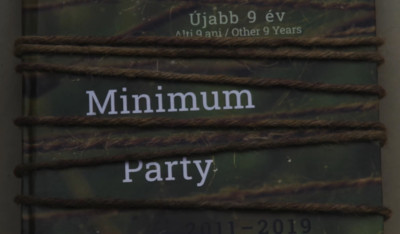
Given that we could not hold the 25th Minimum Party in 2020, as much as we had prepared for it, due to the epidemic, we decided to publish a photo album instead. We received the agreement to change the goal of the grant from the Communitas Foundation for 2020.
By the end of November 2020, the Minimum Party album, the ninth publication of its kind by the association, was published, documenting the nine art camps held between 2011 and 2019. The launch of the publication was held online on 21 November 2020 at 18:00.
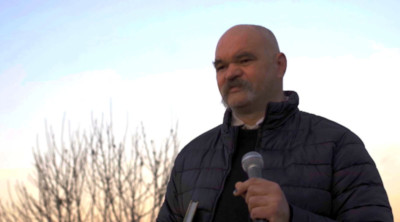
The 2010 camp was the last one to be catalogued, so the album we are planning will start in 2011. The retrospective has been a very exciting experience for us: going through the documentation, sorting through the photos, editing the texts and translating them into Romanian and English has proved to be a huge task. The published material is, of course, the result of a subjective selection, but what is included in this colourful 172-page album we hope will evoke the spirit of the camp.
The virtual album presentation features István Molnár, the image designer of the Minimum Party events, with the voice of the narrator. The photo album of the camp, which is organised around a concept or a theme each year, includes a short description of the nine camps and a list of their programmes in Hungarian, Romanian and English. A large part of the publication is filled with photos. We hope that the pictures in the album will prove that nature is an important habitat for art.
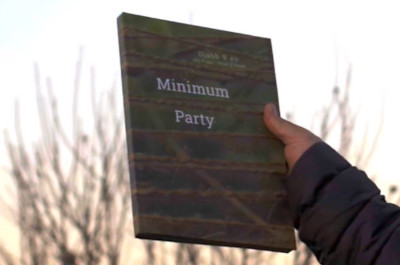
The production, editing and printing of this publication were supported by the Government of Romania - Office for Interethnic Relations. The creation of the virtual space presentation was financed by the RMDSZ and the Communitas Foundation. This photo album is available free of charge to the camp's creators and to the public.
We would like to thank the Communitas Foundation for their support and cooperation in making the film that made the virtual presentation possible.
We report on the 24th Minimum Party
Between 31 July - 11 August 2019, the Minimum Party creative camp and professional forum took place for the 24th time at the usual location at the foot of the Tisza stream (at its mouth), in the Szeklerland village of Kászonszék. The campers, participants and invited guests had the opportunity to create in ten workshops, present their works and learn about new contemporary art at the professional forum. This year, we focused on the details, looking for the whole in the detail and the details in the whole, in line with the camp's theme.
Creative workshops: Visual (fine arts) workshop (Péter Pál – Târgu Mures), Photography workshop (Róbert Mosberger – Mór, Hungary), Video animation workshop (Zsolt Hátszegi – Miercurea Ciuc), Music workshop (Miquėu Montanaro – France), Motion theatre (pantomime) workshop (Endre Bölöni Dix – Budapest), Architecture workshop (Ildikó Márton – Odorheiu Secuiesc), Writing workshop (Gábor Vida – Târgu Mures), Philosophy workshop (Zsolt Pálfalusi – Budapest), Handicraft (pottery) workshop (Fruzsina Pusztai – Cluj), + Élboy (experimental theatre workshop) (Attila Szabó – Miskolc).
Members of the documentary group were Tibor Schneider (video, Cluj) and Ildikó Lőrincz (photo, Odorheiu Secuiesc).
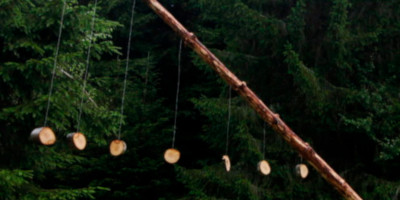
31st July, Wednesday:
Arrival day.
Setting up the camp
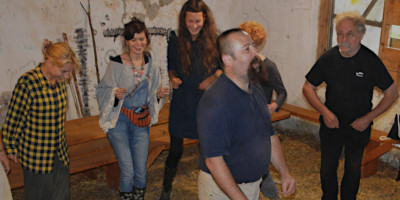
1st August, Thursday
8-10 - Breakfast
10-13 - Free time
13-15 - Workshop leaders’ introduction
15-16 - Lunch
16-18.30 - Workshop activities
18.30 - Elemér Kádár: “Ocean in a Drop” – The World Ocean in a Drop of “Ritkamagyar” – presentation within the framework of the professional forum
20:00 - Dinner
21:00 - Attila Szabó – István Molnár - Élboy: Camp Opening Ritual
22:00 - Tibor Schneider – Balázs Faragó: Nostalgy. Screening from the works of Film Workshops from earlier years, Part I
Followed by campfire

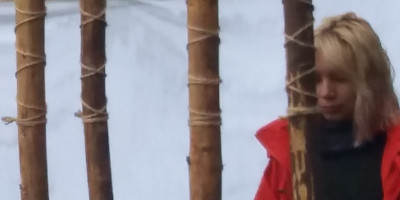
2nd August, Friday
8-10 - Breakfast
10-14 - Workshop activities
14-15 - Lunch
16-19 - Workshop activities
19:00 - Zsolt Fekete (Lovacska): The 7 Trees - film screening and discussion
20:00 - Dinner
21:00 - Attila Szabó – István Molnár - Élboy: Getting Worse, Maybe – experimental theatre performance
21:30 - Péter Pál presents his works
23.30 - Csenge Schneider-Lönhárt – Bence Schneider: Animation and Exhibition
Followed by campfire
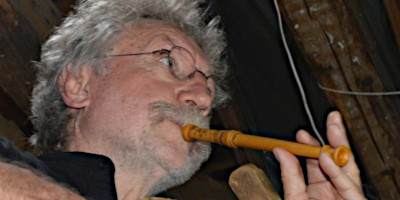
3rd August, Saturday
8-10 - Breakfast
10-14 - Workshop activities
14-15 - Lunch
16-18 - Workshop activities
18:00 - Róbert Geréb: Drug Free Art – lecture within the framework of the professional forum
19.30 - Dinner
20:00 - Zsolt Pálfalusi: Hedoné - lecture within the framework of the professional forum
21:30 - Attila Szabó – István Molnár - Élboy: Famous People – experimental theatre performance
22:30 - Tibor Schneider – Balázs Faragó: Nostalgy. Screening from the works of Film Workshops from earlier years, Part II
Followed by campfire, party, Mátyás László: Árnyjáték
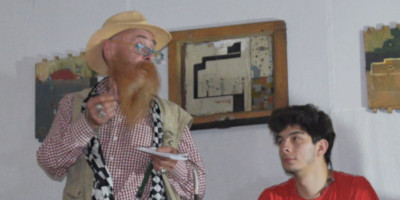
4th August, Sunday
8-10 - Breakfast
10-14 - Workshop activities
14-15 - Lunch
16-18.30 - Workshop activities
18:30 - Gábor Vida: Trianon – lecture within the framework of the professional forum
20:00 - Dinner
21:00 - Attila Szabó – István Molnár - Élboy: experimental theatre performance
21:30 - Miqueu Montanaro: Chansoane - Chansons - concert
22:30 - Zsolt Pálfalusi – Boróka Gyenes: Performance
23:30 - Tibor Schneider – Balázs Faragó: Nostalgy. Screening from the works of Film Workshops from earlier years, Part III
3.
Followed by campfire
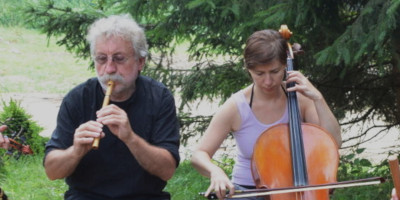
5th August, Monday
8-10 - Breakfast
10-14 - Workshop activities
14-15 - Lunch
16-18 - Workshop activities
18:00 - Endre Bölöni Dix: Evening Tales About Motion Art, Part I – projection within the framework of the professional forum
20:00 - Dinner
21:00 - Attila Szabó – István Molnár - Élboy: Rock, Paper, Scissors – experimental theatre performance
21:30 - Zsolt Fekete: Two Projects – photo exhibition within the framework of the professional forum
23:00 - Tibor Schneider – Balázs Faragó: Nostalgy. Screening from the works of Film Workshops from earlier years, Part IV
24:00 - Campfire
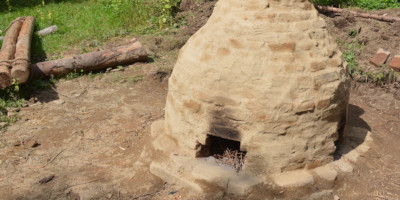
6th August, Tuesday
8-10 - Breakfast
10-14 - Workshop activities
14-15 - Lunch
16-18 - Workshop activities
19:00 – Remus Gabriel Anghel: From Great to Little? Rediscovering of Being German at the Border of Europe
– lecture within the framework of the professional forum
20:00 - Dinner
21:00 - Zsolt Pálfalusi: The Most Beautiful Dog Cemetery of the Worlde – book launching; talk partners: Gitta Kellermann, Endre Bölöni, Ildikó Lőrincz and István Molnár
22:30 - Zsolt Pálfalusi: Beitrage - film screening
23:00 - Campfire
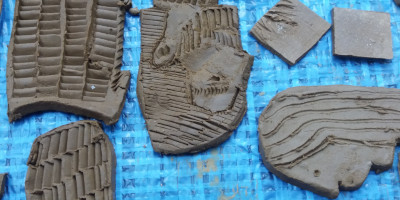
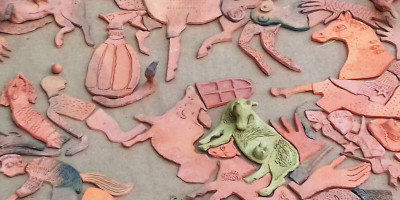
7th August, Wednesday
8-10 - Breakfast
10-14 - Workshop activities
14-15 - Lunch
16-18 - Workshop activities
18:00 - Áron Telegdi-Csetri: Kant's Cosmopolicy – lecture within the framework of the professional forum
19:00 - Viorela Ducu: Picătura care tulbură marea. The Drop that Stirs Up the Ocean - lecture within the framework of the professional forum
20:00 - Dinner
20:45 - Zsolt Hátszegi: The Renaissance of Animation – lecture within the framework of the professional forum
21:50 - Drop-music – concert of the Music Workshop (performers: Zsolt Hátszegi - bass clarinet, Csilla Hátszegi - recorder, hank drum, drum, maracas, vocals, Györgyi Diószegi - piano, Nóra Krokovay - cello, Johanna Imrei - violin, Viola Lengyel - flute, vocals, Gergely Dósai - gardon, saxophone, recorder; Tibor Schneider and Ábel Vörös T. - film editing, László Kolozsváry - drone filming, László Mátyás, Boróka Gyenes, Dunkan Watson, Ádám Skublics, Réka Fazekas - contributors)
22:50 - Endre Bölöni Dix: Evening Tales About Motion Art, Part II – projection within the framework of the professional forum
24:00 - Shower Stall – the architecture workshop's shadow & light play with the collaboration of Miqueu Montanaro and Tibor Schneider
Followed by campfire, party

8th August, Thursday
8-10 - Breakfast
10-14 - Workshop activities
14:00 - Béla Losonczi: Sirius – exhibition, a kiállított képeket méltatta: introduction by János Márkus Barbarossa
15:00 - Lunch
16:00-18.00 - Workshop activities
18:00 - Ignác András: Exploiting the Mineral Waters of Kászon – lecture within the framework of the professional forum
19:30 - Gyula Lőrincz – Krisztina Szabó: Rouge - performance
20:00 - Péter Pál: Moscophoros - art film screening
20:20 - Dinner
21:00 - Ildikó Márton: Architectural Details – lecture within the framework of the professional forum
22:00 - Tibor Zátonyi: Analogue – presenting a photo album
23:30 - Tibor Schneider – Balázs Faragó: Nostalgy. Screening from the works of Film Workshops from earlier years, Part V
Followed by campfire
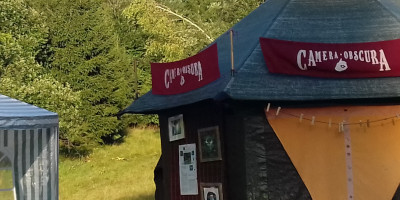
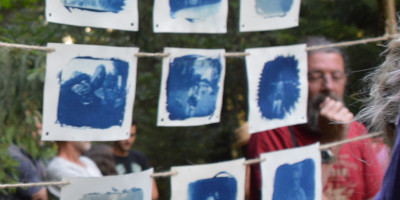
9th August, Friday
8-10 - Breakfast
10-14 - Workshop activities
14-15 - Lunch
16-19 - Workshop activities
19:00 - Performance of the Pantomime Workshop
20:00 - Dinner
21:00 - Róbert Mosberger's Wandering Gallery – presentation and screening within the framework of the professional forum
22:00 - Zsolt Pálfalusi: The Basic Problems of Hermeneutics – lecture within the framework of the professional forum
23:30 - Tibor Schneider – Balázs Faragó: Nostalgy. Screening from the works of Film Workshops from earlier years, Part VI
Followed by campfire
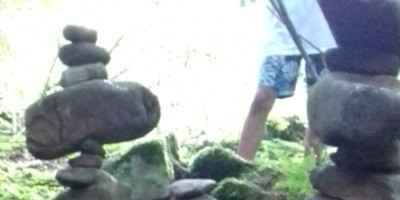
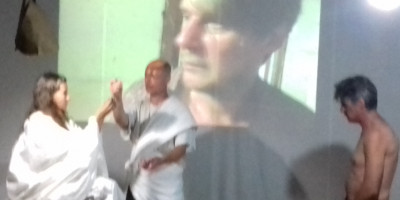
10th August, Saturday
8-10 - Breakfast
10-14.30 - Workshop activities
14:30 – Lunch
16-18 - Workshop activities
18:00 - Visual tour, visiting the works created during the camp
1. Architecture workshop: Instrument
2. Ceramics workshop: Oven
3. Ceramics workshop: Clay Works
4. Balázs Faragó – Sámuel Faragó: Performance, music by Johanna Imrei and Gergely Dósai
5. Photo workshop: Tableau
6. Csilla Hunyadi: Stone Jewels
7. Photo workshop: Exhibition Opening, music by Johanna Imrei, Gergely Dósai, Csilla Erzsébet Hátszegi, Zsolt Hátszegi, Viola Lengyel and Sándor Orbók
8. Architecture workshop: Shower stall
9. Visual art workshop: Land art, artists: Tamás Kurjatkó and Anna Heléna Radi
10. Painting exhibition
11. Csongor Losonczi: Lake Losonczi
12. The Face of All, tableaus of the camp
20:00 - Dinner
21:00 - Duncan Watson: Juggler – presentation with the co-operation of the Pantomime Workshop (Endre Bölöni and Lilla Jasszenovics)
21:30 - Katalin Molnár: 2 works - presentation
22:00 - Performance of the Group ANL
22:30 - Zsolt Pálfalusi – Boróka Gyenes: Performance
23:00 - Projection of the Film and Animation Film Workshop
23:30 - End-of-camp party
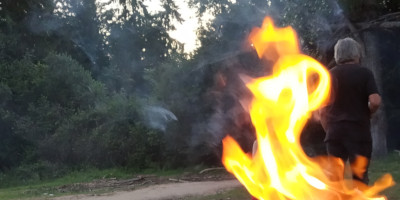
11th August, Sunday
Camp break, going home.
Romanian Government – Department of Inter-Ethnic Relations (DRI),
National Cultural Fund Program (Budapest),
Democratic Alliance of Hungarians in Romania and Communitas Foundation (Cluj).
Mayor's Office of Plăieșii de Jos,
Kazun Cultural Association,
Dr. Lukács Mihály Primary School (Plăieșii de Jos),
Tuzson János Elementary School (Cașinu Nou)
The twenty-fourth Minimum Party creative camp and professional forum
July 31 – August 11, 2019 near the village of Kászonaltíz,
at the mouth of the Tiszás stream.
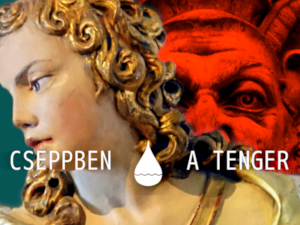
This year, in early August, we will focus on the details at the Minimum Party creation camp. Ocean in a drop will be the password to create and experiment. We will look for the greatness in the small, the whole in the partial. The formula that creates structures. But we can also add to this the saying that the devil is in the detail, which is the opposite of the former. In the execution of any great plan, there can be evil, the unacceptable, or simply the chance of failure, in the details. As we are used to looking at both sides of the coin, we are looking for the angel and the demon - in the detail - in good Minimumparty fashion.
Creative workshops: visual (fine arts) workshop (Péter Pál – Târgu Mures), photography workshop (Róbert Mosberger – Mór, Hungary), video animation workshop (Zsolt Hátszegi – Miercurea Ciuc), music workshop (Miquėu Montanaro – France), pantomime workshop (Endre Bölöni Dix – Budapest), architecture workshop (Ildikó Márton – Odorheiu Secuiesc), writing workshop (Gábor Vida – Târgu Mures), philosophy workshop (Zsolt Pálfalusi – Budapest), handicraft workshop (Fruzsina Pusztai – Cluj), + Élboy (Attila Szabó – Miskolc).
Music workshop, led by Miquėu Montanaro (France).
Minimal music, repetitive small forms, music in the silence, the piano in the stone, the bass in the branch... the flute in the grass.
In the birds, the symphony.
This year I want to make a musical film, to record in the woods, by the fire, in the stream. To make a video of a poem, to organize a musical excursion with a focus on movement and silence. All are welcome who want to find music in one breath. The sea in a drop.
(Miquėu Montanaro)
Important! This workshop will have its presentation already on August 8, as the workshop leader will have to be appointed on Aug. 9th of August. Those who register for the workshop can stay until the end of the camp, either working within this workshop or in collaboration with other workshops.
Visual (fine arts) workshop, led by Péter Pál (Târgu Mures).
A drop in the sea or a drop in the ocean. The slogan of this year's Party is a good one to use in this environment. You could say, leaf in the forest, or leaf in the forest. Because the point of creation is to make a small part of the whole perceivable. Encountering the landscape, nature, in the past, or even today, we have tried to capture it on a canvas, a piece of paper or a celluloid. All this is to capture the experience of nature at home, but it is nowhere near the experience we have when we look down from a mountain top. We can create in nature, following the logic and structure of nature, but most of the time we fail because our creation does not even come close to the complexity and perfection of nature.
Yet let us experiment. Let us look for a leaf that evokes the forest, let us drop a drop that contains the essence of the whole sea. Our materials are a given, because leaves, branches, stumps, earth, stones, moss, everything will be around us. But we don't shut ourselves away from paper, pencil, paint, camera. In every medium, we can capture the leaf, the drop, the experience of the whole.
Architecture workshop, led by Ildikó Márton (Odorheiu Secuiesc).
Good architecture is fulfilling on a mental, spiritual and physical level. In my experience, the best opportunity for this kind of creation is found in the artistic and natural sacredness of the environment. So hopefully this year, within the framework of the minimum party, we will again succeed in reaching that pure and achievable minimum that can be the maximum for all of us.
Video animation workshop, led by Zsolt Hátszegi (Miercurea Ciuc).
On a rock, the drop can be a collecting lens of the atmosphere (with tiny, shimmering reflections). In the mass of the sea, it can be part of an organic ripple (goose bumps, sublime). The animation workshop as a "mass" can be an entity as a collecting lens of the "atmosphere" of the caesura and create the "sublime" through the medium of animation. While the "drop" may choose to create as an individual, as a "mass" we will create complex animated landscapes. Ideally, a drop of architecture, a drop of landscape art, music, photography, movement will meet in the process, and the other drops will be left to arrive unexpectedly...
Photography workshop, „minimum camera obscura”, led by Róbert Mosberger (Mór, Hungary).
Consciousness, possibility, plenty of room for error, experimentation, play and reflection, greatness in simplicity. Long exposures-movements, vignetting, infinite depth of field, different perspectives, other distortions. These are all hallmarks of the camera obscura, a tool that can be created from almost anything.
We build camera obscuras (pinhole cameras), we transform boxes, we shoot with them. We also make photograms, montages. The photography is done on flat film, we make the photographic papers ourselves, the flat film is copied onto these with sunlight, our final photo will be blue (cyanotype). We also build on any faulty parts of the image that w
We will use the technical specificity of these to approach and unfold the subject matter in this year's photo workshop. The whole is in the details, the whole in the details.
How far can the view be broken down and compressed to leave information? What can be extracted from the details? From these condensed photos, can we compose new wholes, new images?
Let us lose ourselves in the details, but let us see the essence!
The workshop always seeks to collaborate with other workshops.
Pantomime workshop, led by Endre Bölöni Dix (Budapest).
A slight tremor or movement. Does it stop or continue? In another movement it becomes a sequence, a movement, some kind of action.
Like a sound that becomes a word with another sound, a melody, a narrative or music.
Like a drop that grows with another drop from a vein into a stream, into a river, all the way to the rippling sea.
In this eternal process of assembling and disintegrat
What elementary details can we break down our human movement into, in order to understand its nature and create some kind of language or narrative?
A few small movements can tell as much as a novel. Can we perceive and reproduce at this level? What kind of sequences of movements can be created in the relationship between our physical, mental and spiritual make-up/body and our environment?
My intention is that this year's workshop would be an exploratory, experimental space to explore these questions from the perspectives of body-consciousness, movement and dance, pantomime technique and movement culture.
Philosophy workshop, led by Zsolt Pálfalusi (Budapest).
The basic idea of this year's philosophy workshop is the problem of interpreting works of art and with it the concept of the hermeneutic circle. In other words, the assumption, which has been voiced since Schleiermacher, that the part must be examined from the whole, the whole from the part. For this we take authors such as Dilthey, Heidegger and Gadamer as our starting point. The course will be based on a history of science theme, we will study a classic text in a seminar format and master it in the workshop. The ultimate aim is to understand the question of whether it is possible to see the totality of a work of art, and whether, by analogy, it is possible to understand human life by following a guiding principle such as art, which in its literary form presents us with a totality that we can never discover in real life. This interpretation reveals the contradictions between artistic wholeness and the fragmentation of reality. Can this contradiction be reconciled?
Writing workshop, led by Gábor Vida (Târgu Mures).
It could be sea
With drops of water, what are we getting? The biggest is too small for what we want it to do. Because we don't know exactly what. Maybe try gravity and wonder what it will become when it falls. Will another one come up. Will two drops be alike, or what will they be different? And why? Does it matter? If, for example, it drips at a steady rate for ten thousand years, after a while we can no longer talk about it coming from the same place and going to the same place. Let's take a cave that has not yet been discovered. So there is no time. No one counts how many drops we are. Nobody counts, there is no first and there is no last. There is only one drop. And that can be anything.
Handicraft (ceramics) workshop, led by Fruzsina Pusztai (Cluj).
Ceramic is the malleable material. Different objects are torn from a single mass of clay, shaped by hand, placed on a disc, imprinted with different objects: giving a thousand different meanings to the material, giving meaning and function to the meaningless, making the amorphous aesthetic. Yet all ceramic objects carry the characteristics of the clay from which they are made. From the point of view of the whole-part: by experimenting with the parts, with the objects created, we try to get to know the general (ceramics as a material), by getting to know the material, gradually learning to recognise the favourable potential, to perfect the method.
The professional "staff" of the ceramics workshop will include the kiln-building and technical managers: Nadin Székely, a student of the Hungarian University of Fine Arts, who in her drawings and ceramics playfully combines the formal world of antique vase figures with stylistic elements of popular culture and minimalism, and Abigél Nagy, a student of ceramics at the University of Fine Arts in Cluj-Napoca, who tries to capture the notion of movement and transformation in her work.
Romanian Government – Department of Inter-Ethnic Relations (DRI),
National Cultural Fund Program (Budapest),
Democratic Alliance of Hungarians in Romania and Communitas Foundation (Cluj).
Mayor's Office of Plăieșii de Jos
Kazun Cultural Association,
Dr. Lukács Mihály Primary School (Plăieșii de Jos),
János Tuzson Primary School (Cașinu Nou).
Erdély.Ma, The Hungarian-language broadcast of Romanian Television
17th Minimum Party Creative
Camp
25th July – 5th August
2012
Location: Tiszástő (the confluence of
Tisza-creek) near Kászonaltíz village (Plăieşii de Jos, county
Harghita, RO)
We easily comprehend facts, especially if the arguments are good. The eye easily figures out landscapes, especially if the viewpoint is right.
But is it also possible that one's truth cannot be seen? While we are rambling about our mental landscapes, looking for a watchtower, we wonder whether our search may have unforeseen consequences. If space extends our vision, can its image be misread? Maybe the source of incomprehensibility is the ambiguous self-confidence of our mind which peregrinates in the shadow of the valley of our reason? Can be misconceived something easy to comprehend? Will one see his misconception?
This year's workshop activity will analyse the idea of “Through a Glass Darkly”, while a camp fire lit in the circle brings as if by magic, bizarre shadows upon the borderless frontier zone of the Kászon glade.
*Borderstanding: fusion between the words 'border' and 'understanding'
Vezeti: Hunor Pető (Budapest)
Misunderstanding, which means a defective interpretation of the received information, is a pillar of human communication. If that information is a symbol, due to the attached connotations one can misread its meaning. For example if we say apple, in most of the cases the listener will tend to believe that we are rather talking about a brand, than a fruit. To reassign its original meaning it must be peeled of its extra connotations. To create a new meaning we might need to add something.
In the workshop we'll try to pin down that something with the help of samples from art history, especially those created out of misunderstanding. After that we shall examine and evaluate misunderstandings and misinterpretations brought along by the participants and finally we shall try to make them fit for a professional discourse.
The goal of the workshop is to put the experience of misunderstanding in an artistic context first by modelling it and then by making it a part of a creative process. The process will include both classical and contemporary techniques such as land art, installation, photo and video.
Led by: Junya Ishii (Japan)
There are trees, soil, plants, insects, animals and water in the forest. They don't belong to any nation, religion or creed, although they work well in their own system. At the beginning humans also were parts of the system of nature. Man fears nature, and at the same time, respects it. He gives something to nature, and takes from it as well.
Just to be body and harvest fresh ideas from your body and environment, this is the aim of our workshop. There will be no Teacher/Master at this workshop, I will only try to show a direction.
This is my second time to lead a Minimum Party Workshop and I am looking forward to get back with my small tent and share my perspective/thought, and also listen/learn your perspective/thought. Since 2008 (when I first visited Minimum Party) I traversed plenty of borderlines to see a different reality. Yet I am still looking for middle road in creation.
I think Kászon is perfect environment to try to reach your body! (Junya)
Led by: Zoltán Molnár (Budapest)
Panorama is that field of view which is broader than the usual human angle of view. A man with panoramic sight perceives both the surrounding world and himself in it, realizing the point-like smallness of his dimension in the context of the whole. In 1685 Johann Zahn from Würzburg invented a tool. It was a small wood-box with movable lens and 45 grade oriented mirror behind it, which projected the image to a frosted glass on the top. Canaletto Canal (1697–1768) made his Venetian cityscapes with the help of this “ancestor of optical panoramic camera”. By horizontally or vertically rotated cameras we shall create panoramic photos about someone whose story will unfold from space and landscape.
We can create photo-montages with light, mirrors, glasses, without cutting, pasting or masking. The created pictures appear as montages, while they are still visions of a real space.
Requirements: photo-camera (film or digital), tripod, flashlight (torch and photo), timer, mirror, glass.
Led by: Gergő Fogarasi (Budapest) and video-documentary: Tibor Schneider (Cluj)
“In the end we are drained by the whirl of principles” (Based on Zola's statement)
The easiest thing in the world is to misunderstand... Mis-feeling is slippery. Why cheat if you're afraid? Conversation is only a source of misunderstandings. On the other hand silence can be misleading too. Human life is an infinite cycle of misunderstandings.
This year we shall make an experience based on the theme of Feeling/Forgetting/Denial , and we shall use the genres and structures of video-art.
We expect ideas, short descriptions and stories too. This workshop will try to collaborate with other workshops too.
In 10 days of work we shall go through three stages:
I. Brain-storming, scripting
II. Shooting, video-experiments
III. Post-processing
There will be projections regularly at evenings (21st century movies), followed by talks.
The works made during the workshop will be shown at the end of the camp! Please bring cameras (photo, video), laptops if you can, or anything else that may be useful!
Last years' films can be seen here
Led by: Zsolt Lászlóffy (Oradea)
I just have read in Henry David Thoreau's book: “At evening, the distant lowing of some cow in the horizon beyond the woods sounded sweet and melodious, and at first I would mistake it for the voices of certain minstrels by whom I was sometimes serenaded, who might be straying over hill and dale; but soon I was not unpleasantly disappointed when it was prolonged into the cheap and natural music of the cow. I do not mean to be satirical, but to express my appreciation of those youths' singing, when I state that I perceived clearly that it was akin to the music of the cow, and they were at length one articulation of Nature.” (Henry David Thoreau: Walden, Sounds)
Does sound/silence have a specific meaning? Might the music flow directed by chance have a concrete meaning that can be put into words? What kind of additional connotations convey any of Mozart's Dice Games (Musikalisches Würfelspiel) compared to his many others? Even before the activity of John Cage (1912–1992), who marked the I Ching (Book of Changes) as being his 'ars poetica', artists were preoccupied by the introduction of different types of mystic number squares and magical squares into music experience. Cage finished The Future of Music with the following invitation: “It is time to make a modern music concert in Africa.” Can chance in music be foreseen, and if the answer is yes, to what extent? Chance is not identical with improvisation, neither with its free nor with its restricted types. Moreover, can one foresee the effect of a concert like this at Tiszástő of Kászon?
Led by: Attila Szabó (Cluj-Miskolc)
With the spontaneous devices of land art and through its placement in landscape Attila Szabó (ex-Élboy) tries to make a kind of animation theatre in which the brook is the princess veil, the red carpet rolling down from the hill is the shed blood of the dragoon and the sun is Polyhemus, the one-eyed giant. According to the nature of animation inanimate things become animated, come to life, such as puppets, objects or even a mountain or a brook. Not the dimension is the most important.
Led by: Sándor Orbók (Miercurea Ciuc)
Puzzling, usually this word does not belong to the characteristics of contemporary architecture. Sometimes only due to pure shape characteristics or as a result of its aim, modern architecture is very simply organised and not puzzling, moreover it wants to make use of this effect. Since it is rather rarely the object of human activity than its frame, the puzzling and misconceiving character might be classified only as arbitrariness or even mistake, because it bothers the attention directed on the activity of those who are in this frame. When is this arbitrariness allowed and what is its aim? To what extent may puzzling and misconceiving character be an aim, and which are those aims? Is this compatible at all with the concept of 'aim'? (The concept of 'designing' implies also the 'aim'.) May this be produced on purpose authentically? In short how should we treat the effect of puzzling, incomprehensible and infinite character, the effect of fantastic elements?
We shall try to find answers to these questions and according to the possibilities and conclusions we try to embody them.
Led by: Zsuzsa Selyem (Cluj)
Among the most exhausting parts of compulsory readings we can surely include those 'presented-as-classics' landscape descriptions. Aristotle (or his darkly mirror in our mind) should be blamed for this too: his mimesis (mirroring) principle, which neither counts the mirror nor the eye of the beholder. Landscape description is both mirror and objectification.
In our workshop we shall test different stages of landscapes and writing methods : mirroring, self-mirroring (mise en abime), personification, objective prose, shaping the different voices of natural elements from Tiszástő , inventing rhetoric forms, as far as envisioning the future through a type of a so called ecological prose, where neither trees nor men are present. Maybe a kind of hybrids.
Led by: Zsolt Pálfalusi (Budapest)
What is the consequence, if philosophically, “there is nothing left to do” and so one day we feel, that we have no reason to stop and think about anything because we feel, “we understand everything”? We know, that is not the case since in fact we do not understand everything, but essentially there is nothing you can do about it. We got beyond stratling philosophical perceptions, and also left the company of those people, who still have discoveries of that kind.
And what happens if likewise, you have already had behind all the “shocking artistic experiences” and when art is no more than “fun” – and if not, it gets uncomfortable, and even that doesn't matter either. What happens when, over the ruins, we are reflecting again on those things whose importance is... incomprehensible?
we shall look into these issues during the morning workshop seminars..
For this course read texts for discussion:
Cioran, E.M.: The End of Philosophy
Chalupecky, Jindrich: Art and Sacrifice
Kruger, Barbara: Irony/Passion
Led by: Melinda Csergő (Lăzarea)
The handling of objects implies a lot of different interpretations. Different objects are results of different creative processes, and are marked by different personalities. Likewise their usage is different, depending of the owner's personality.
The craft workshop's creative process will respect two goals: usability and the craftsman's tastes. Wool and thread will be used to create things for personal or collective use. These objects will be the results of either individual or collective work, and as such will allow different interpretations.
There will be room for experimenting crochet, macramé, felting, with lot of possibilities (freedom) during the creative process.
This year's camp is sponsored by
Romanian Government – Department for Interethnic Relations
Ministry of Culture and National Heritage of Romania
National Cultural Fund of Hungary
Communitas
Foundation (Cluj)
Our partners are:
Mayor's Office – Village (Parish) Plăieşii de Jos,
Kazun Cultural Assoiation.
[Back]
13th Minimum Party Creative Camp and
Professional Forum
30th July – 10th August 2008
Kászonaltíz (Plăieşii de Jos), Tiszástő (county
Harghita)
Human perception is bound to a given place, and it is
extremely limited. We cannot see ourselves both from an
external and internal point of view, only within boundaries.
We are looking for our place, a place which can be marked as
ours. The result of this quest is the gaining of a kind of
space. Time and space may become shape of our hope. Miklós
Erdély, who attributed a considerable critical potential to
scientific reasoning, speaks about space-like-time and
time-like-perception. Maybe it shows the power of chance that
we have arrived to the same concept like Miklós Erdély did,
while time and motives had been different. “Téridény tehát”
tells Erdély through one of the male voices in „Dirac a
mozipénztár előtt”. Thus the concept of “Téridény” is our
basic motif, the one which guides this year's creative
experiments. It is concrete and abstract at the same time.
Space is what we make our own through moulding, even if its
dimensions are geographical and historical, that is: cannot
be spanned. Be sacred or profane, public or private from a
qualitative point of view, in its characterisation it is
always implied the observer's position: the question of
outside and inside. We wait for those to come in the
workshops (visual arts, photo, film, music, dance,
philosophy, craft) of the 13th Minimum Party Creative Camp,
who would like to play with space. In the camp on 31st July
(21.00 pm) there will be Miquèu Montanaro's (France)
concert.
Visual Arts – led by
Szacsva y Pál (Hungary)
Music Workshop – led by Miqueu Montanaro (Provence, France)
Contemporary Dance Workshop – led by
Ishii Junya (Tokió, Japan)
Photo Workshop – led by Róbert Mosberger (Mór, Hungary)
Film Workshop – led by Károly Szabó (Székelyudvarhely/Odorheiu
Secuiesc, Romania)
Philosophy Workshop – led by Zsolt Pálfalusi (Budapest, Hungary)
Élboly – led by Attila
Szabó (Kolozsvár/Cluj Napoca, Romania)
Craft Workshop – led by Melinda Csergő (Gyergyószárhegy/Lazarea,
Romania)
(Literature) Workshop for writing the next
MP-catalogue – Zoltán Sipos
(Kolozsvár/Cluj Napoca, Romania)
Visual Arts
Led by Szacsva y Pál (Hungary)
The way we imagine time, which can be experienced by all of
us in the same way (but of course this is unreal), we have
also a measure of space, and with its help we try to make
permanent a space concept for all of us. This is only an
aspiration. In reality everybody perceives time in a
different way, individually (Bergson), and (as a consequence)
one also perceives space in a different way. However, the
search for common time and space concept will have
significance until people want to experience and create
things together. The only question is: alongside what kind of
time and space concepts would we like to make common these
two basic dimensions of our individual activities and
experiences? Beyond the scientific and speculative approach,
this time we search for artistic representations of space and
time perception, which due to the nature of art will be
always unique and individual, though it may be realised as
common just in the process of coming into being. The Workshop
of Visual Arts gives space (and time) to experimental
creative work for creative communities based on open genre
and media able to be enlarged. Bring along all those
traditional and new technical devices, which according to
you, may help you in representation, designation, cutting and
recombining of space sections.
Music Workshop
Led by Miquèu Montanaro
(France)
Montanaro is the European wanderer of ethnic based musical
improvisation. His world of music knows no boundaries, his
roots are in the Provençal music, but he is also familiar
with the Eastern European music traditions. He invites all
the musicians, who appreciates making experiments in order to
realise a collective music, and they will make music together
with the land, brooks, trees and every element of the
scenery. The musicians' work will be inspired by the forest.
At the end of the co-operation they will make a CD containing
a selection of their music pieces. In the workshop they will
make experiments with mixing improvisation, folk and
contemporary music and vocal music as well. Beside this great
stress will be laid on listening to each others' playing and
on common breathing.
Photo Workshop
Led by Róbert Mosberger
(Hungary)
In the age of digital photography the participants revitalise
an almost forgotten world of images, they will re-discover
the art of photography with self made and simple photographic
devices. In the workshop they will prepare watch cameras and
different type of pinhole cameras, moreover they will become
familiar with the almost forgotten technique of photogram and
cyanotype. There will be set up Róbert Mosberger's travelling
laboratory, the tent-laboratory which was present with great
success at many festivals. The laboratory of Camera Obscura
is an exciting observing and visual device, but it may be
used as a giant camera and photo laboratory as well.
Film Space-Season 13
Led by Károly Szabó (Romania)
From Einstein's relativity theory through different kind of
space and time theories we arrive to the space and time unit
of film, which may be realised with the help of montage. We
would like to elaborate the 4th dimension through the
avant-garde “Shitteth” comedy by Alfred Jarry, entitled “Ubu
the King” (Ubu Roi). The absurd logic and the symbolic
scenery, the grim humour and the neglection of realistic
requirements it makes really suitable for a work in Kászon.
Creators, directors, cinematographers, actors and costumiers
are invited to come as many as possible and other people for
related tasks, too.
Motion Theatre Workshop
Led by Ishii Junya (Japan)
There are trees, soil, plants, insects, animals and water in
the forest. They don't belong to any nation, religion or
philosophies, although they work well in their own system. At
the beginning human-beings belonged also to the system of
nature. Man is afraid of nature, and at the same time, he/she
respects it. He/she gives something to nature, and takes from
it as well. Dancers dance for the space, and they are
influenced by it. Just to be body and think with body, this
is the aim of our workshop. In this workshop your body will
receive plenty of information from space. Then you will have
a lot of question marks. These question marks will be your
treasures. There is no teacher in this workshop. Each of you
will find your own answers through your body, experience and
emotion. We shall work in pairs, and in the group you can
share your treasure with others. This workshop is not
especially for dancers or actors, it is for all those people,
who want to get impression through their body in the forest.
Key-words: Manipulation, Blind walk, Imitation, Breath etc.
Élboly
The Theatre of Joy made by Attila
Szabó, (Romania) István Molnár and Artúr
Vranyecz
This year they plan to make sit-coms (situation comedies)
including 5-6 episodes, which would be shot in the front of
the public, and finally there will be a non-stop projection
on the last day. Once Jerry Seinfeld said… … in one of his
humorous introductions that he hated those serials in which
each part was not an independent unit, and sometimes they
extended it over to the next episode, and the spectator was
informed about this by the inscription: “to be continued”. Of
course this cannot be guessed at the beginning or at
half-time and not even with two minutes before the end...
People just stand and gaze at and they are alarmed: “Oops! In
an instant it starts the news, and Timmy is yet in the depth
of the cleft! People and scriptwriters!!! In five
minutes-time Timmy cannot be rescued from the cleft!!! Let's
do something together!!!” And then the inscription TO BE
CONTINUED appears on the screen rigorously and
dispassionately. Jerry continues the chain of ideas saying
that according to him the good serial does not use the phrase
“to be continued”, but it is built up of well-constructed and
finished episodes ending in a bang, since this is its main
good point. This is the reason for its existence. In case one
would like to see something that is long, endless, boring,
always cut into pieces and stretching from day to day, then
there is one's own life!!! For this reason people should not
watch TV, above all not serials!!! By the way! Two penguins
are in the desert. One of them keeps clasping an electric
stove under his arms, and the other one tries to pull a
tortoise out of its shell. The one with the stove tells to
the other with the tortoise: “Pal, if my eyes do not deceive
me... To be continued
Philosophy Workshop
Led by Zsolt Pálfalusi
(Hungary)
In the Pilosophy Workshop we discuss two basic texts:
1) M. Heidegger: Art and Space
2) G. Deleuze: The Plain and the Grooved
Both of the texts are excellent to become immersed in the way
the slogan of the camp indicates. The seminar permits to get
an insight in the problem of space harped on by the
philosophers, the base of which is not the concept of space
known from macro physics, but the space known by the art,
which has to take into consideration the space of “soul”,
“existence” and “intellect”, and also the problem of their
taking shape (in space) in an artistic way.
Crafts Workshop
Led by Melinda Csergő
(Gyergyószárhegy/ Lazarea, Romania)
Space in itself is a concept hard to define, most often it
becomes concrete through a relationship. People's basic
motivation is to “inhabit” somehow the space used by them,
and to form it, so that the given medium can represent its
user. This is true also for objects and “dresses”. We
decorate ourselves/our space with objects/materials according
to our character, personality and mood. How can one
monopolise the space? To what extent one can make it a
symbolic one? How can be space projected to objects, and how
can one produce its variations? All these with raw materials
as wool, yarn, wood and metal. With these techniques we can
make experiments since this camp gives opportunity to create
really according to our ideas, and it is possible to decorate
our milieu with objects that are rightly the elements of our
relationship to space.
SPACE in the Arts – Professional Forum
Lecturers: Alexandru Antik, Zsombor
Bartos-Elekes, Zsolt Fekete, Zsolt Gyenge,
Zsolt Irsai, Áron Kovács, László Mátyás, Béla Mester, Zsolt
Pálfalusi, Szacsva y Pál,
Gusztáv Ütő, Zoltán Vécsi Nagy Agreements with other
lecturers are going on as well.
The sponsors of this year's camp are:
The Romanian Government, Department of Inter-Ethnic
Relations
National Agency for Youth Initiatives (Romania)
The National Cultural Fund (Hungary)
The Homeland Fund (Hungary)
The Communitas Foundation
A LOT of text need to be translated from Hungarian...
The archives are accessible on the Hungarian (and partly on
the Romanian) version of the site. (Only links listed on the
top of this page are available in English. You still can
visit the Hungarian version, and look at some nice
pictures.)
If you can help translating email us at
minimumparty@gmail.com.
|
|
|
[ Back]